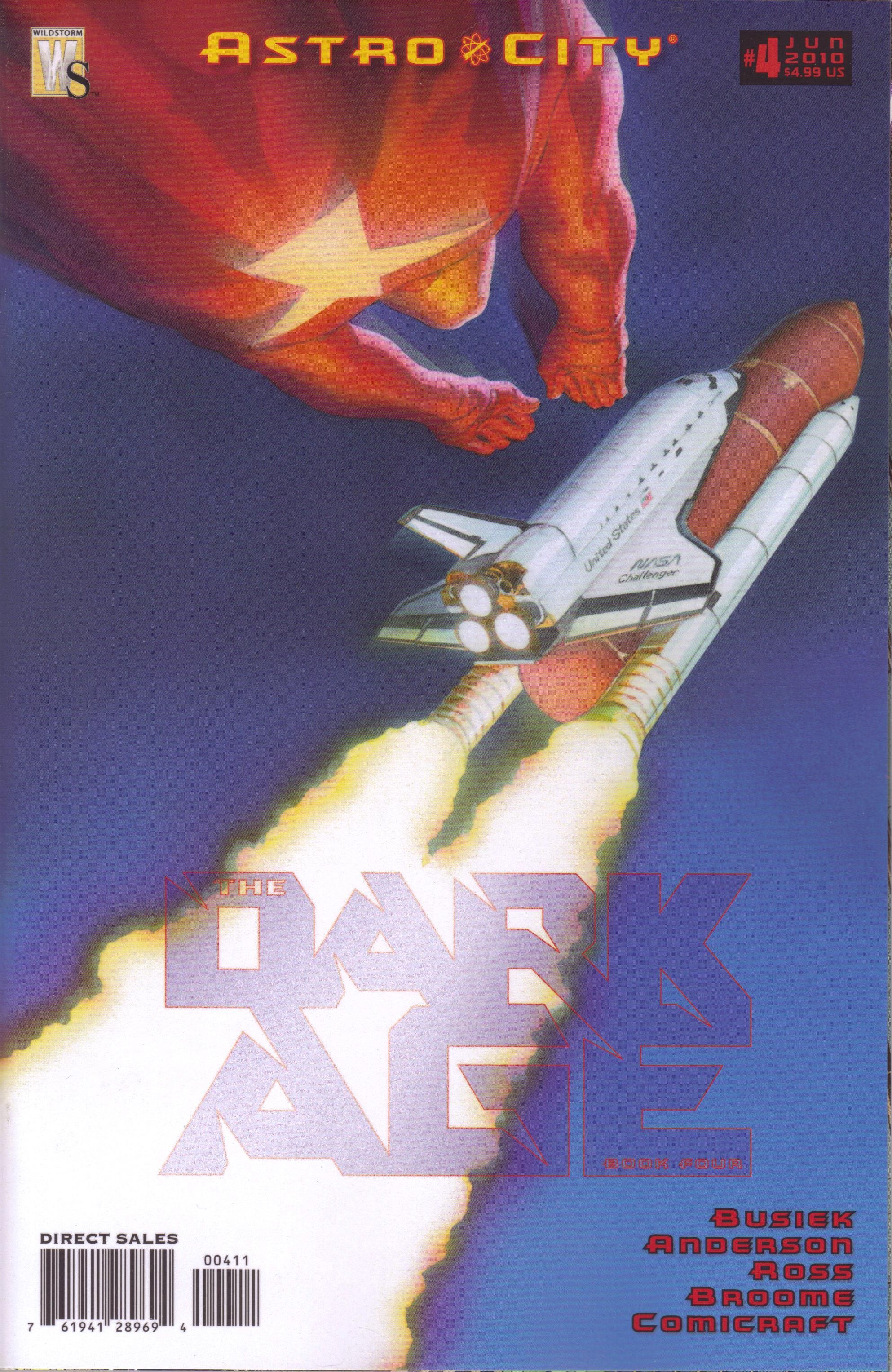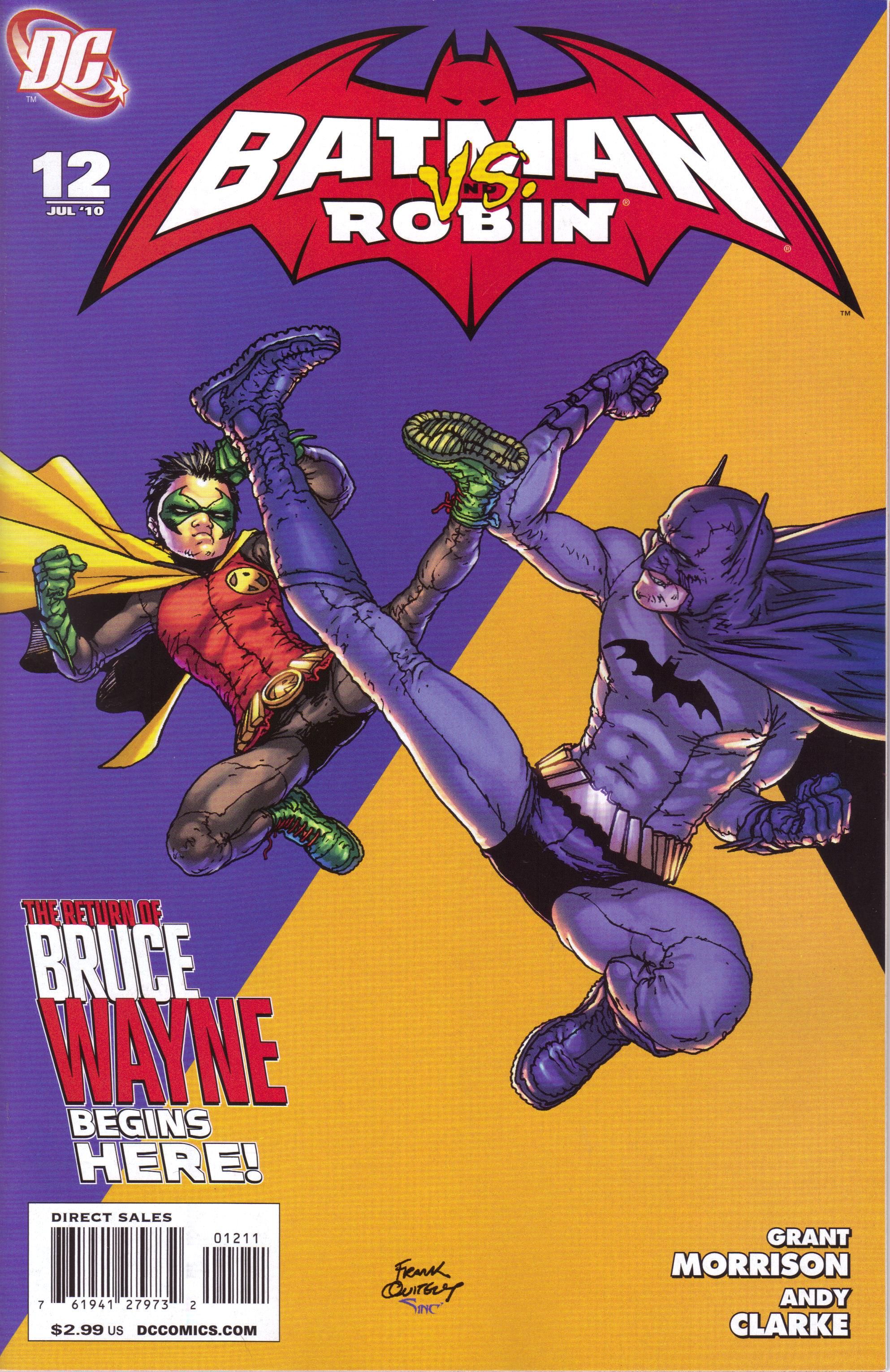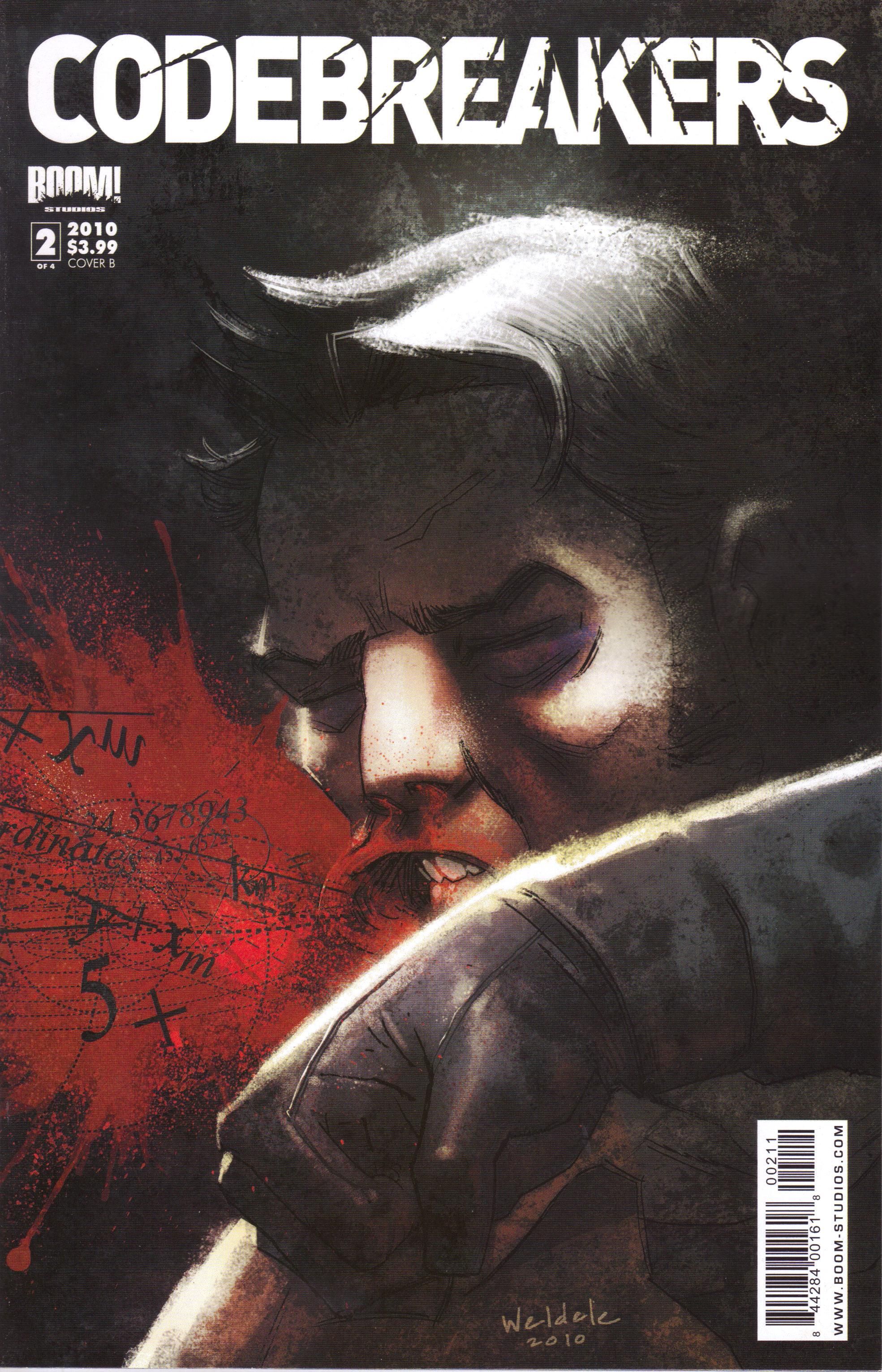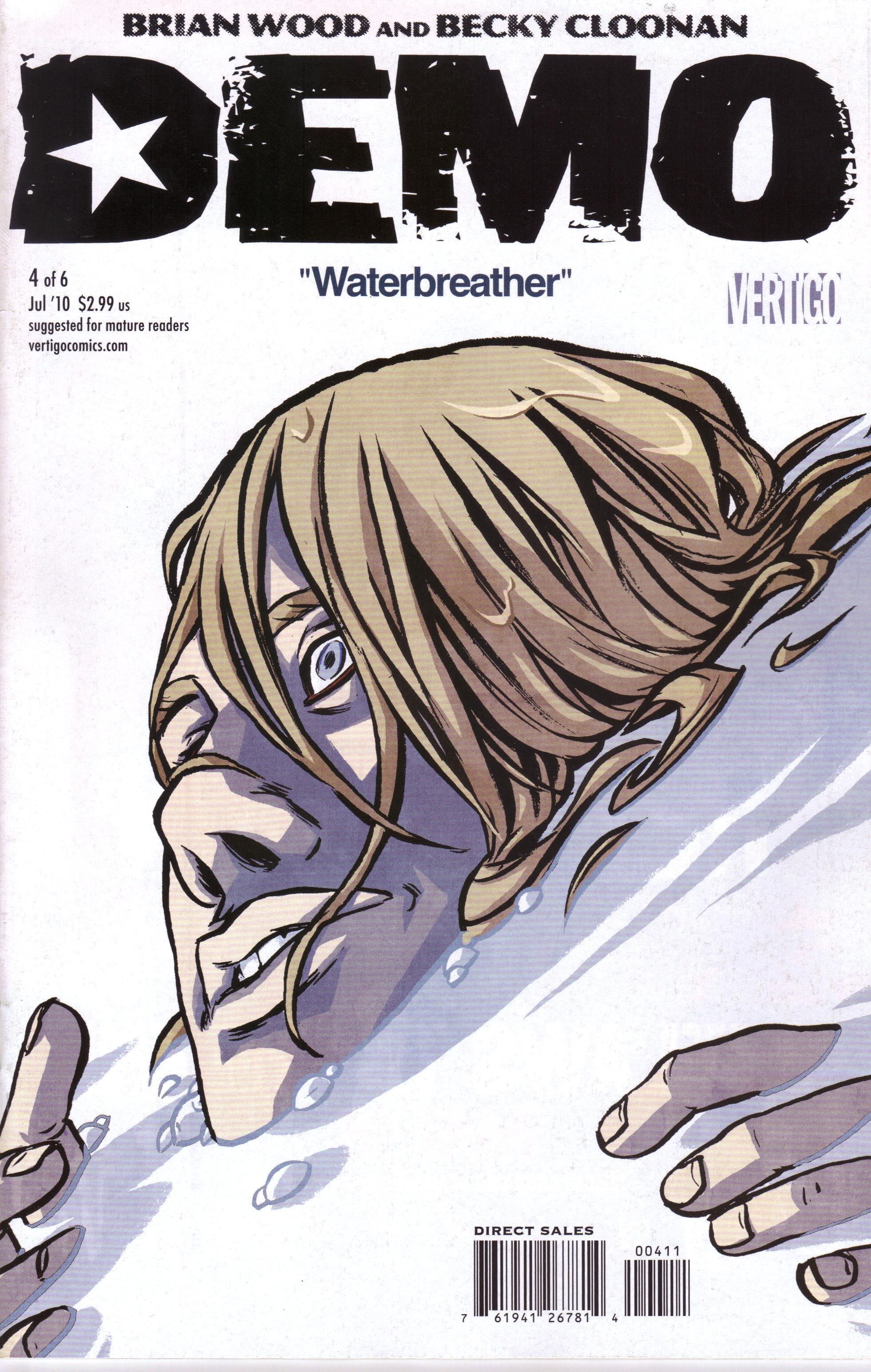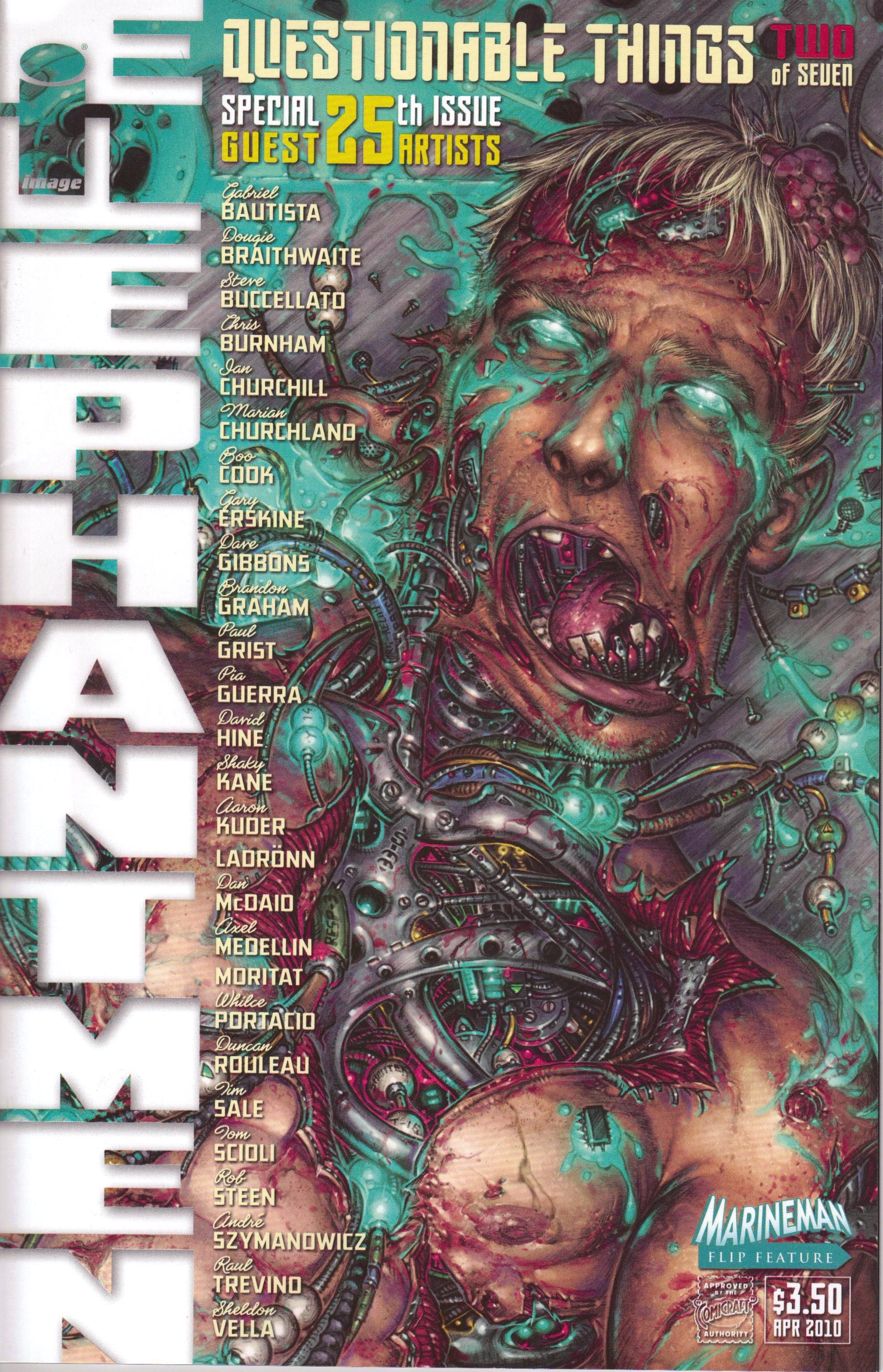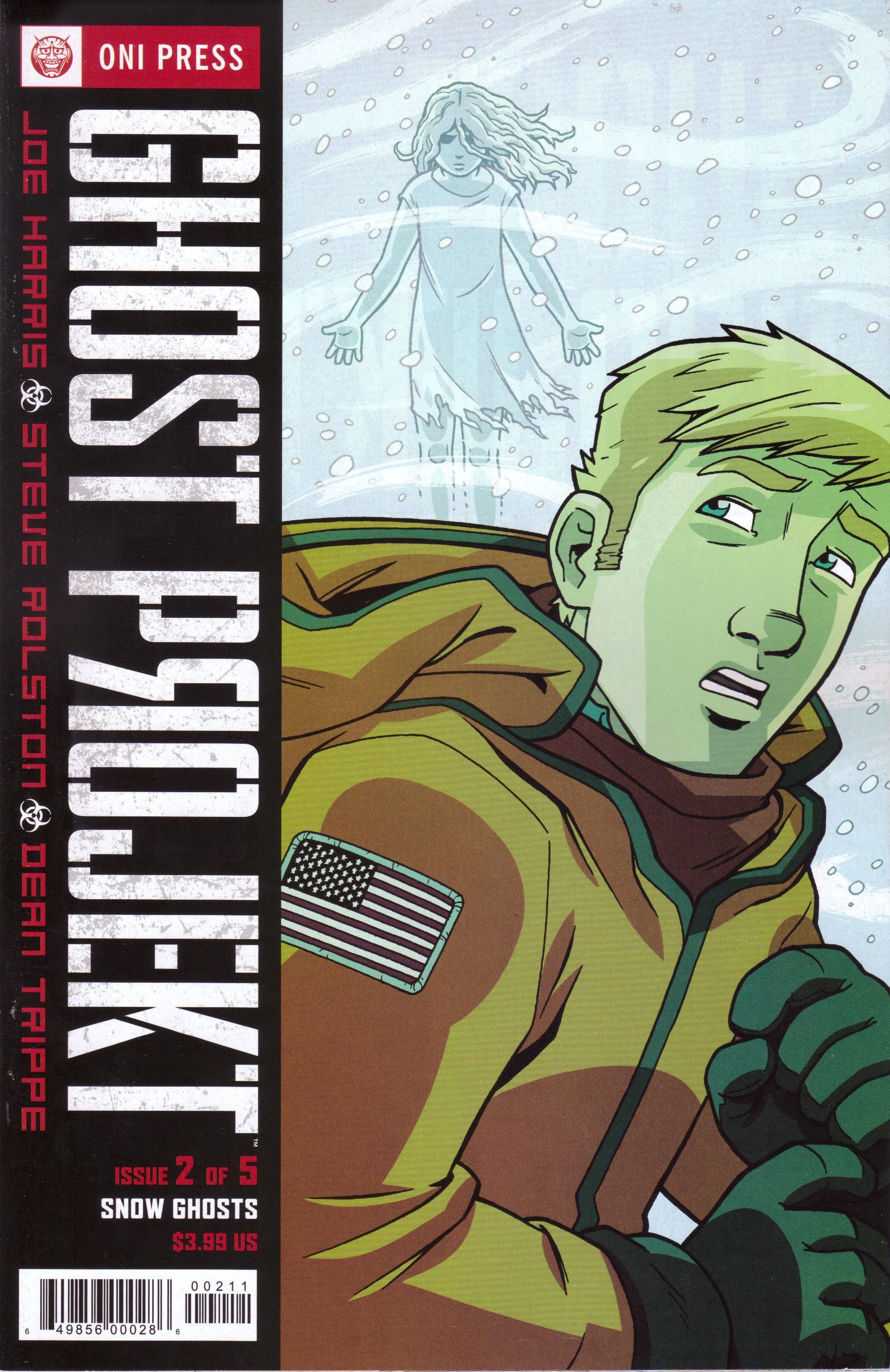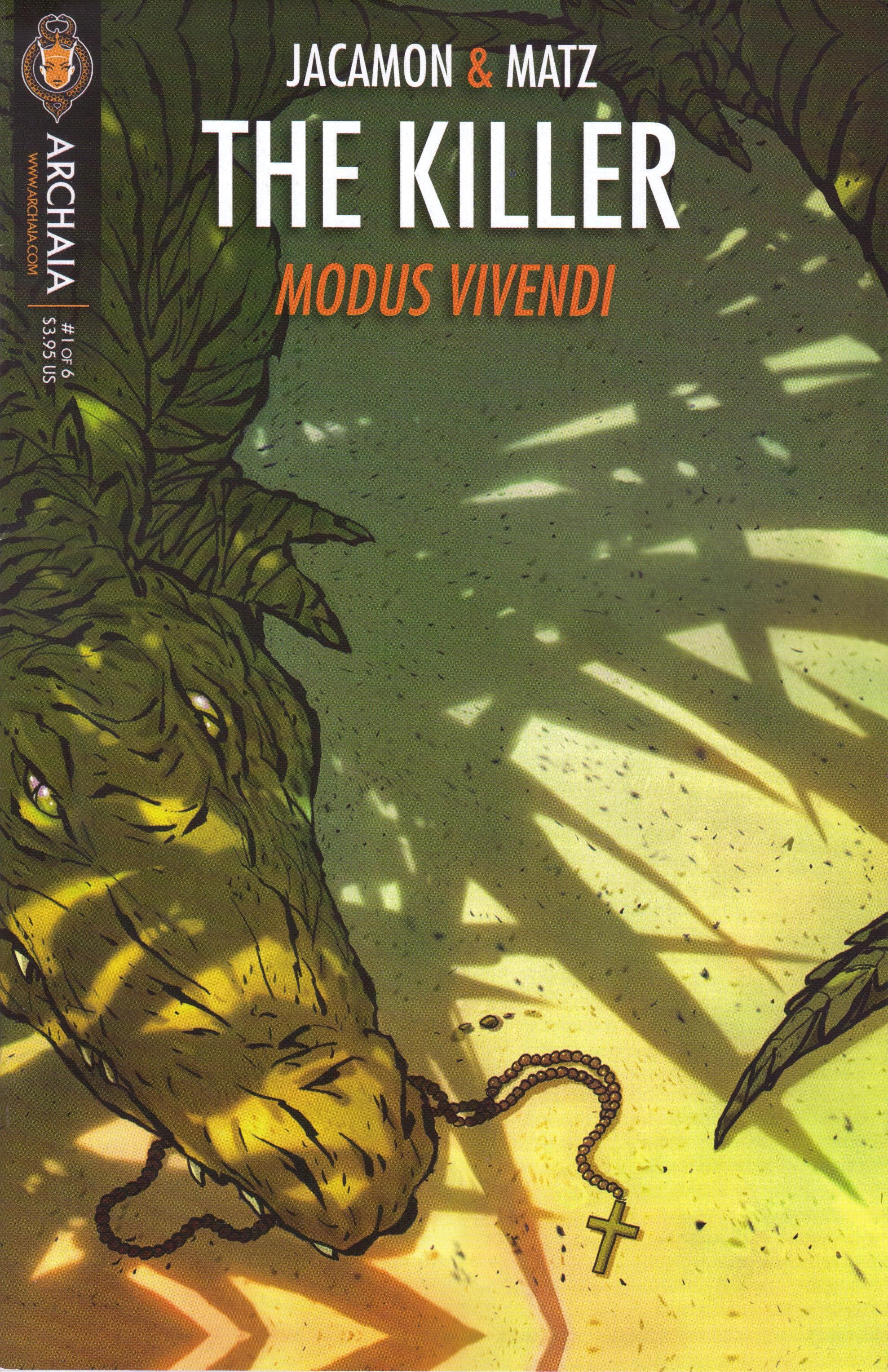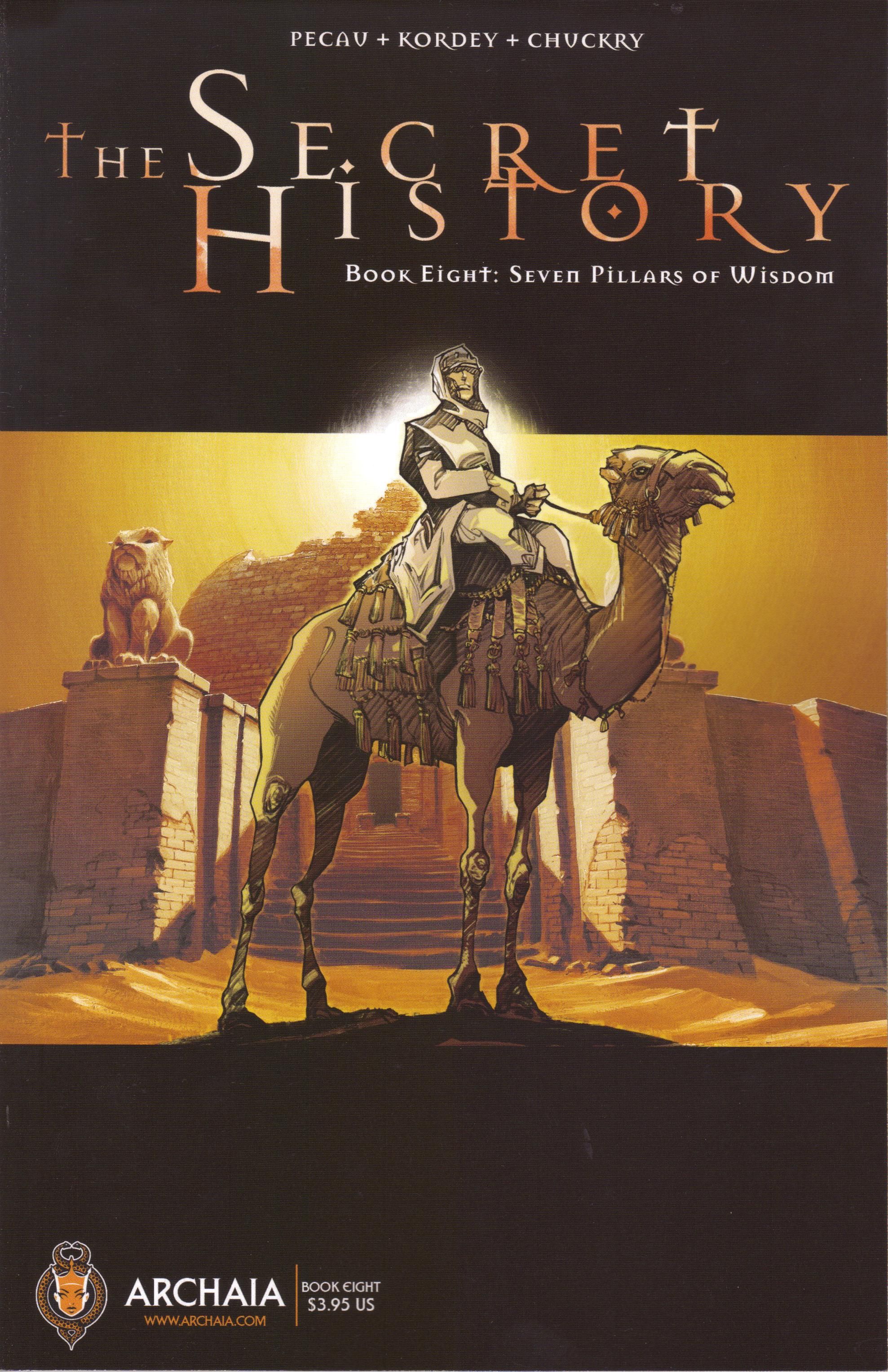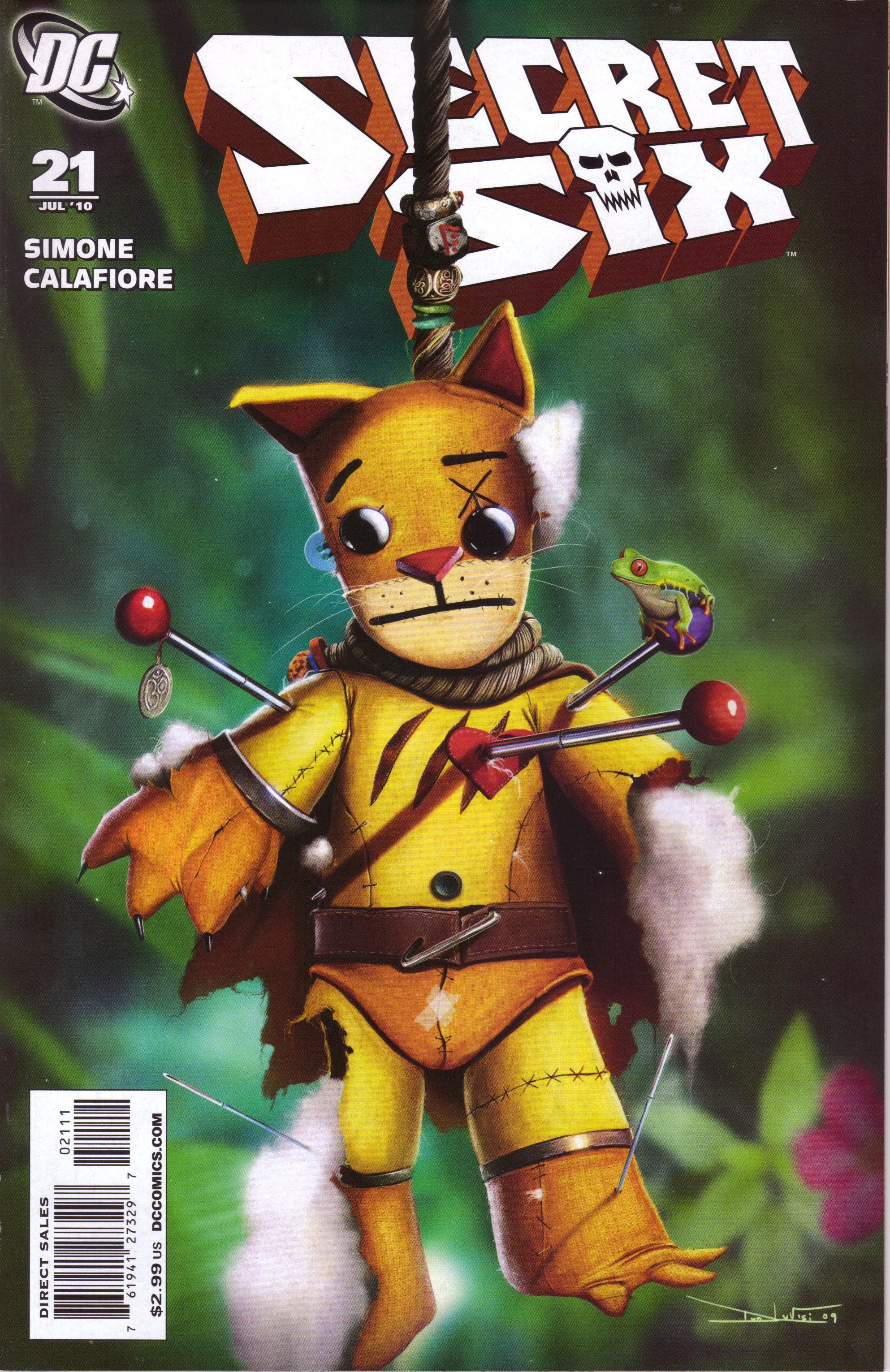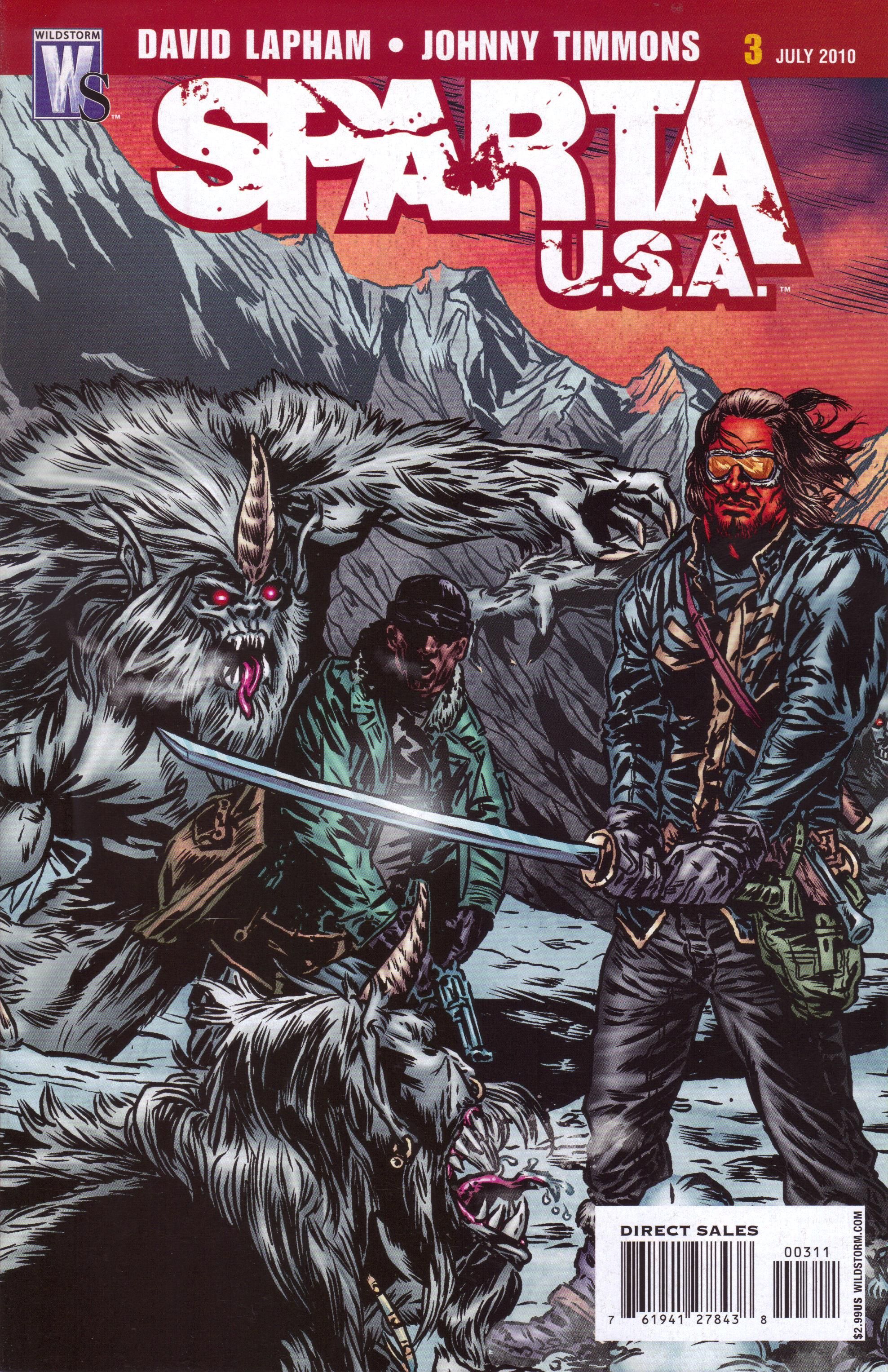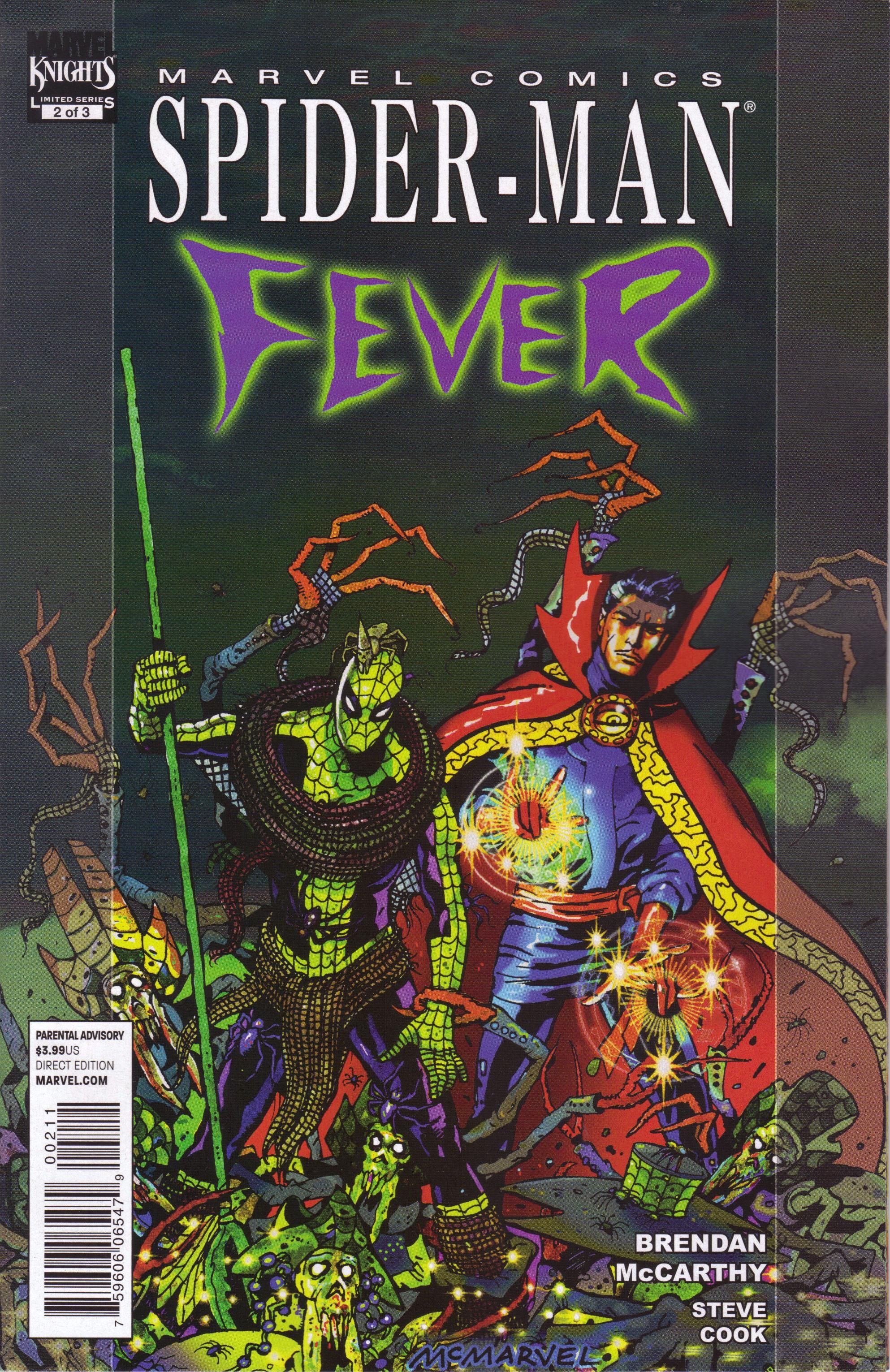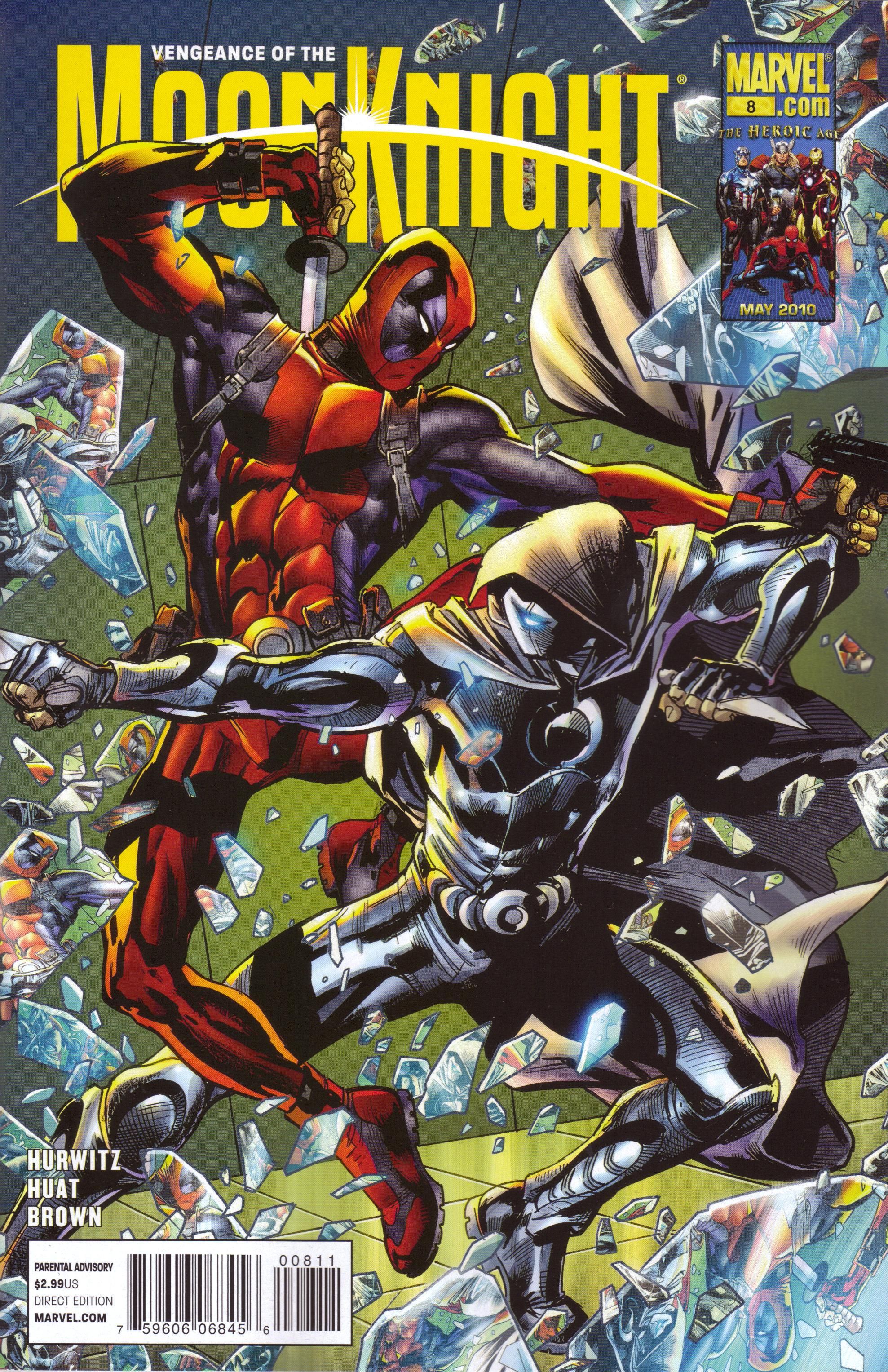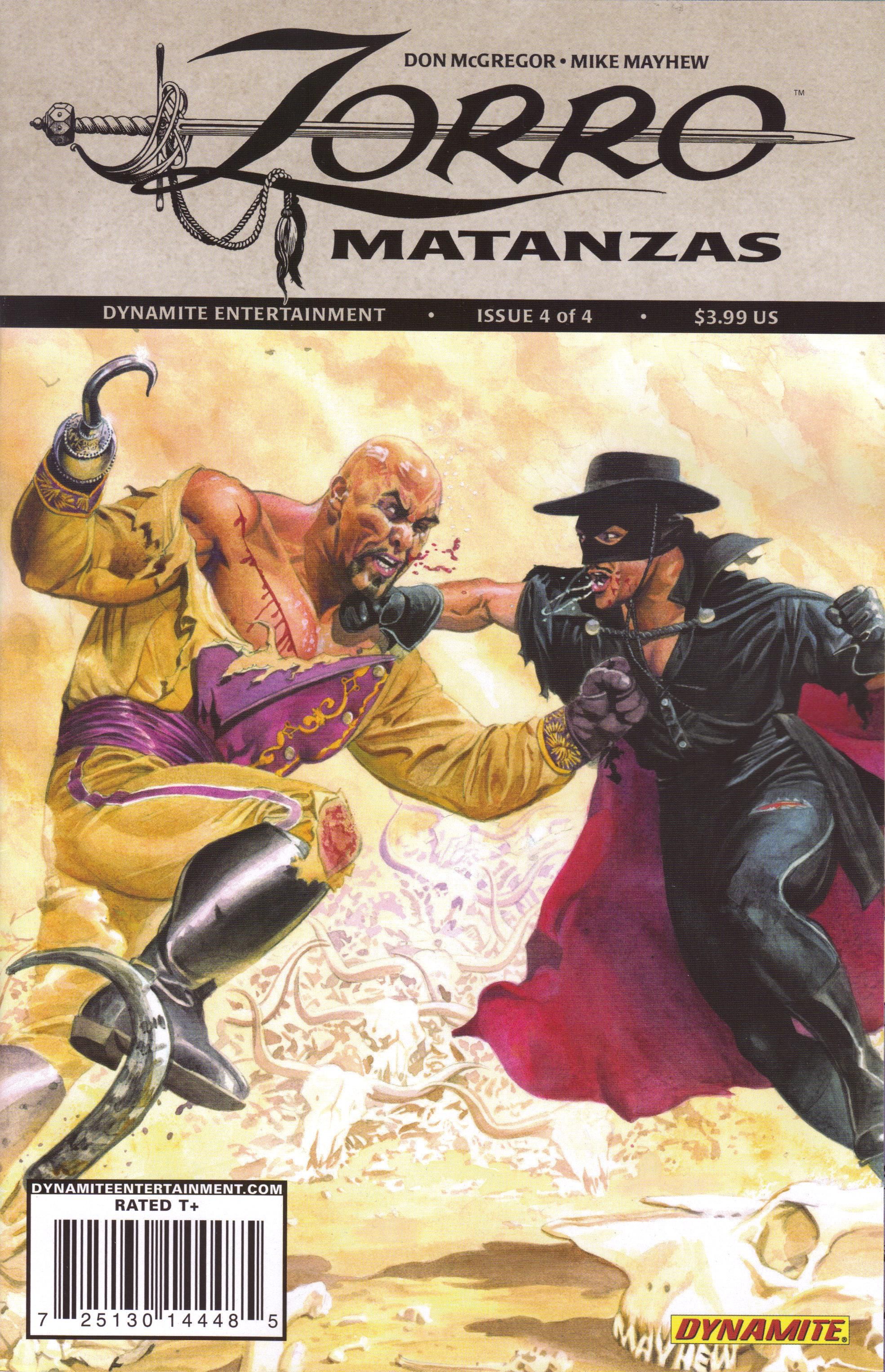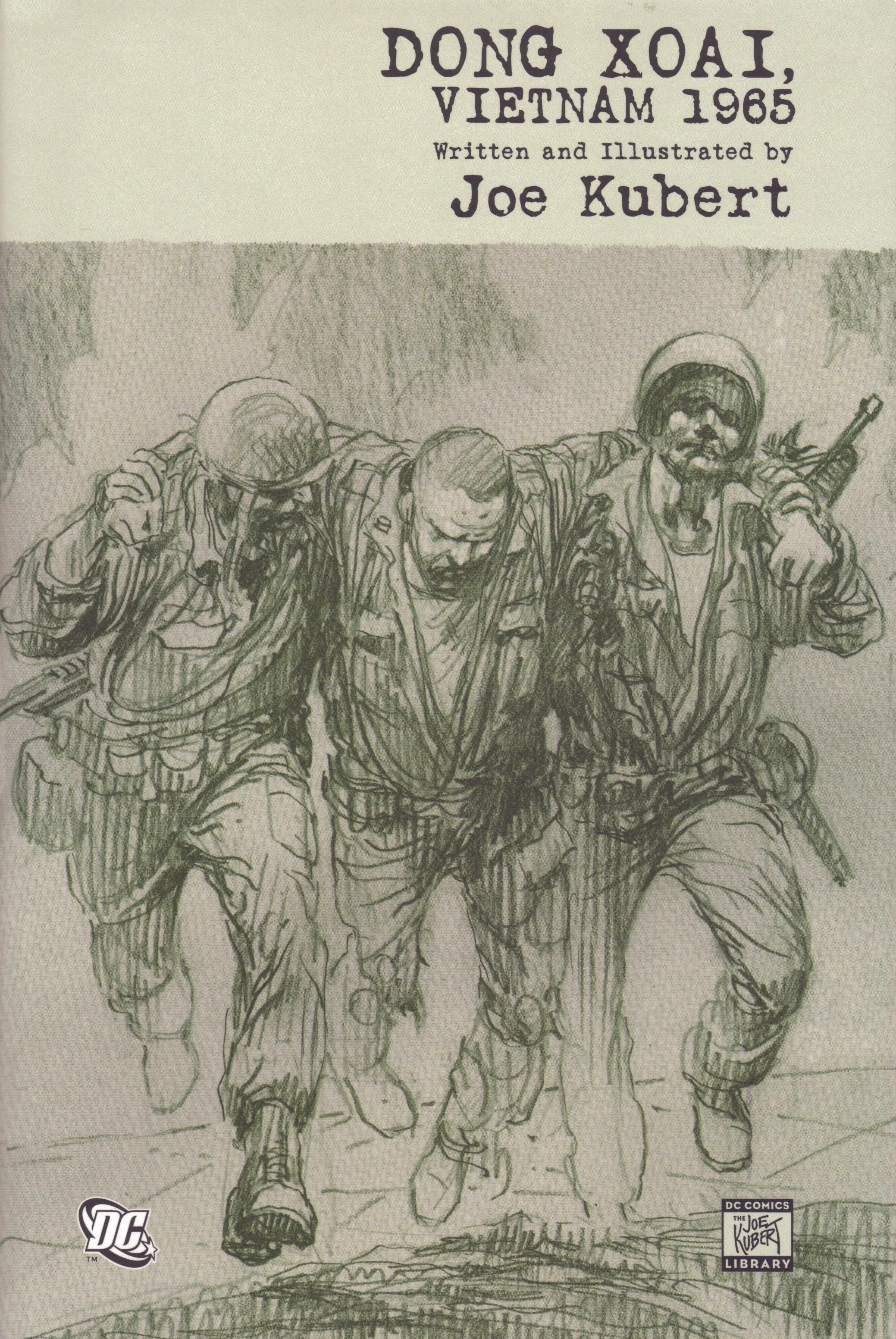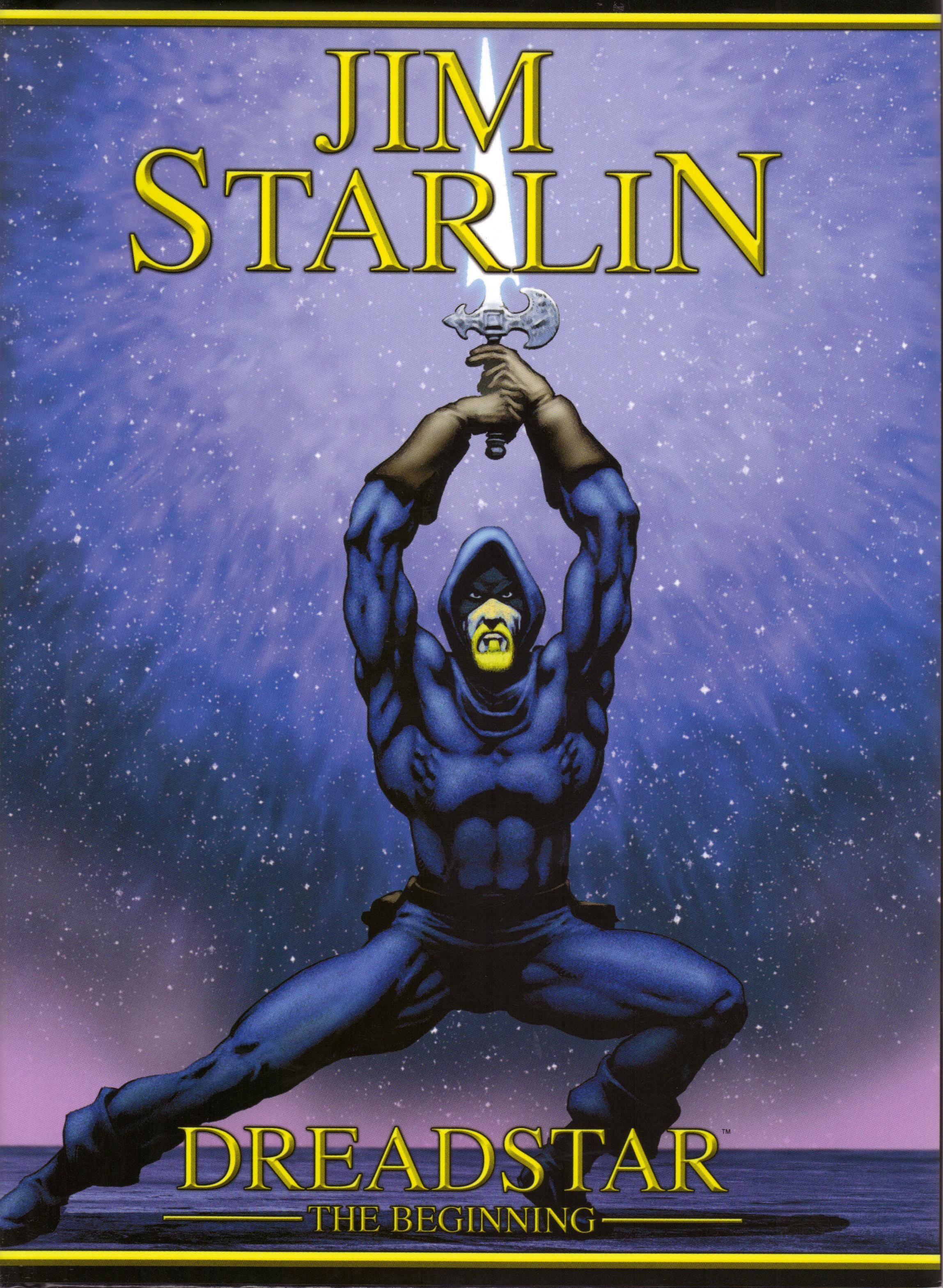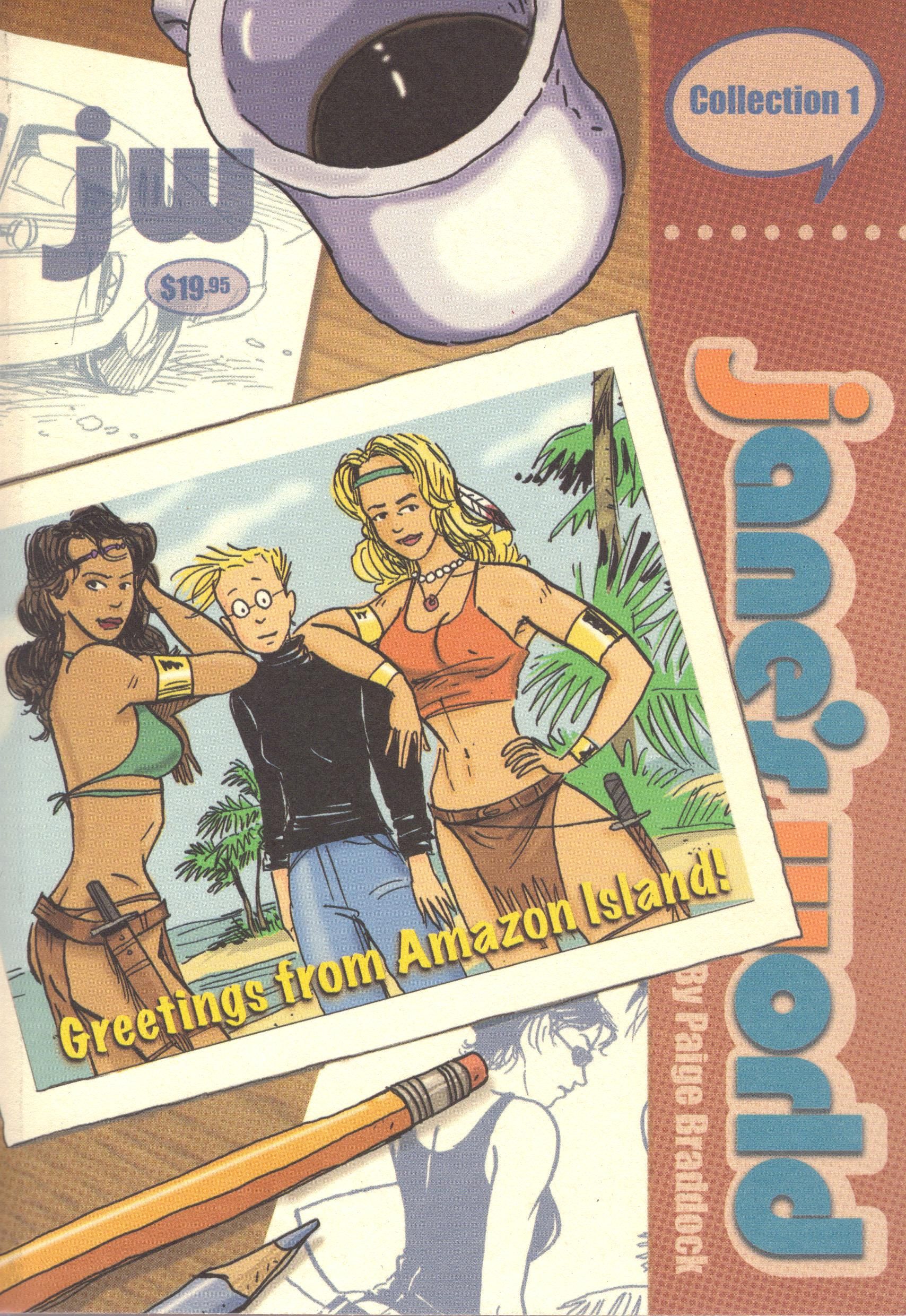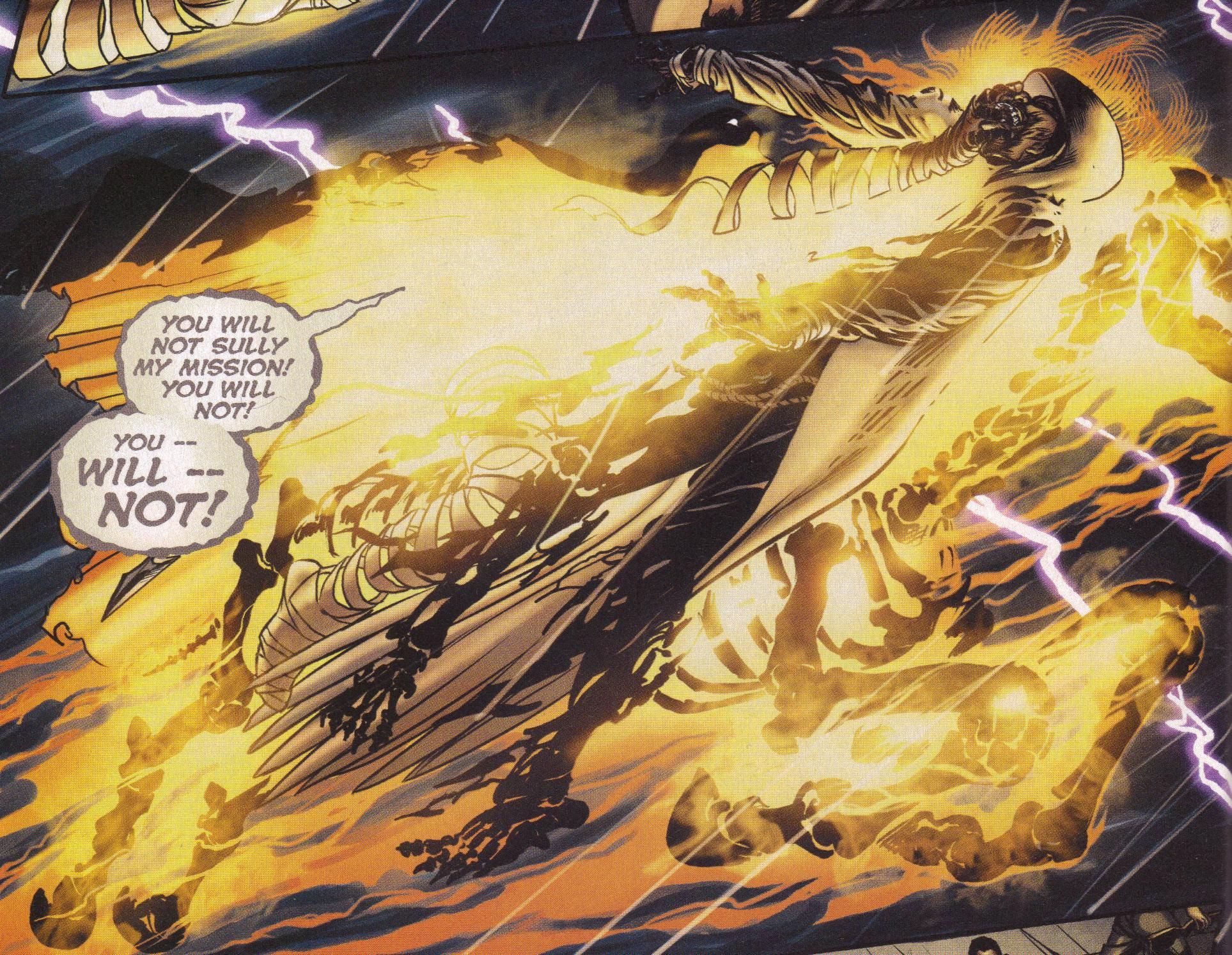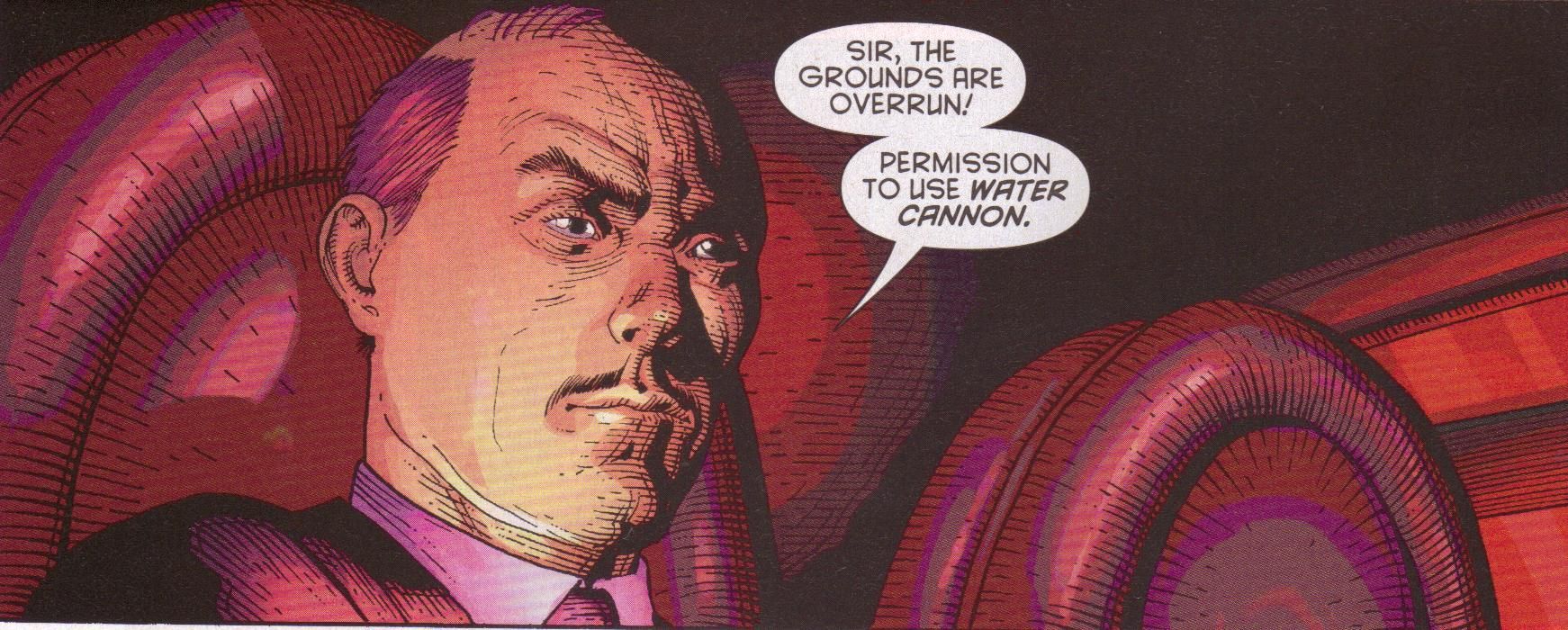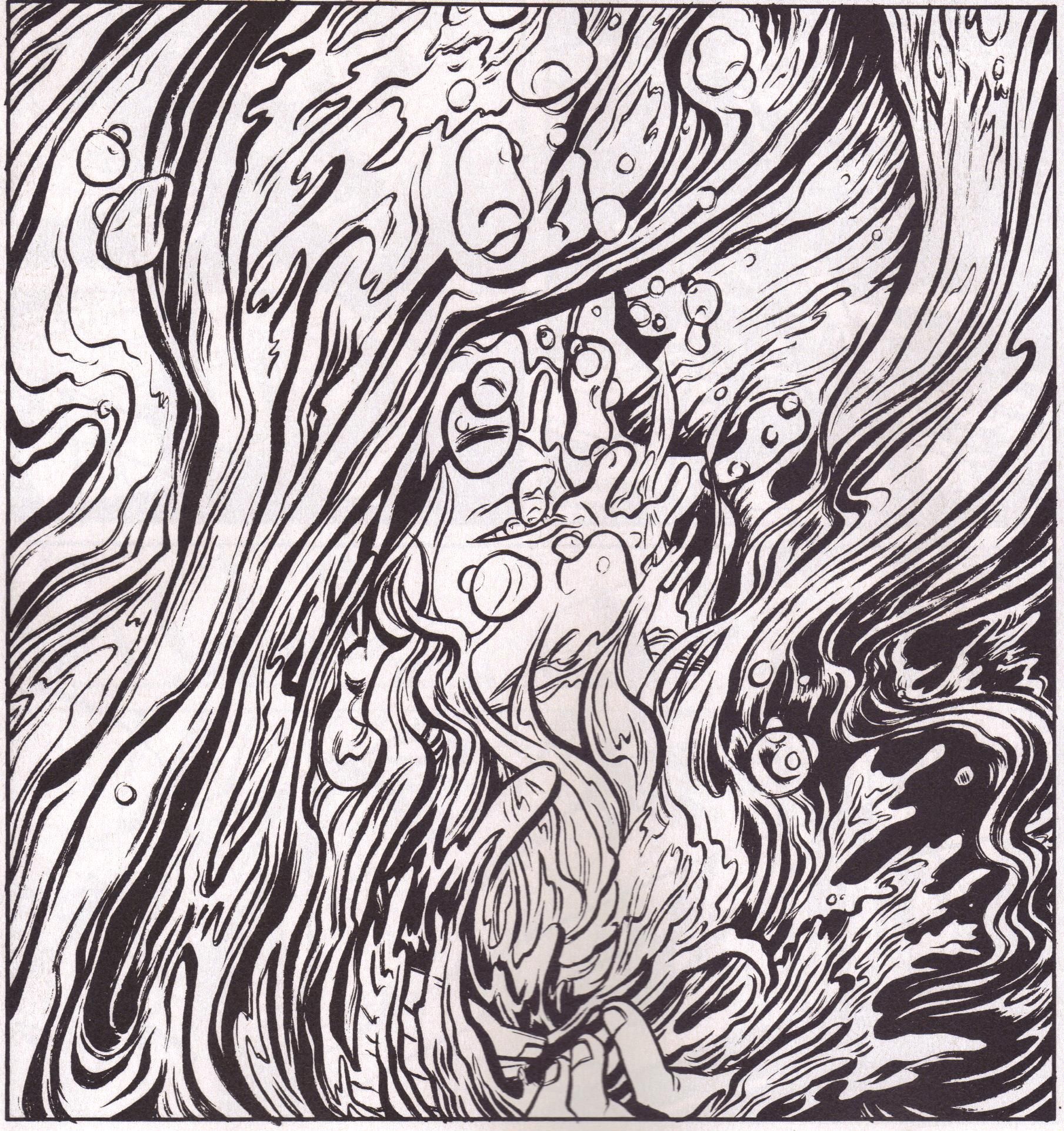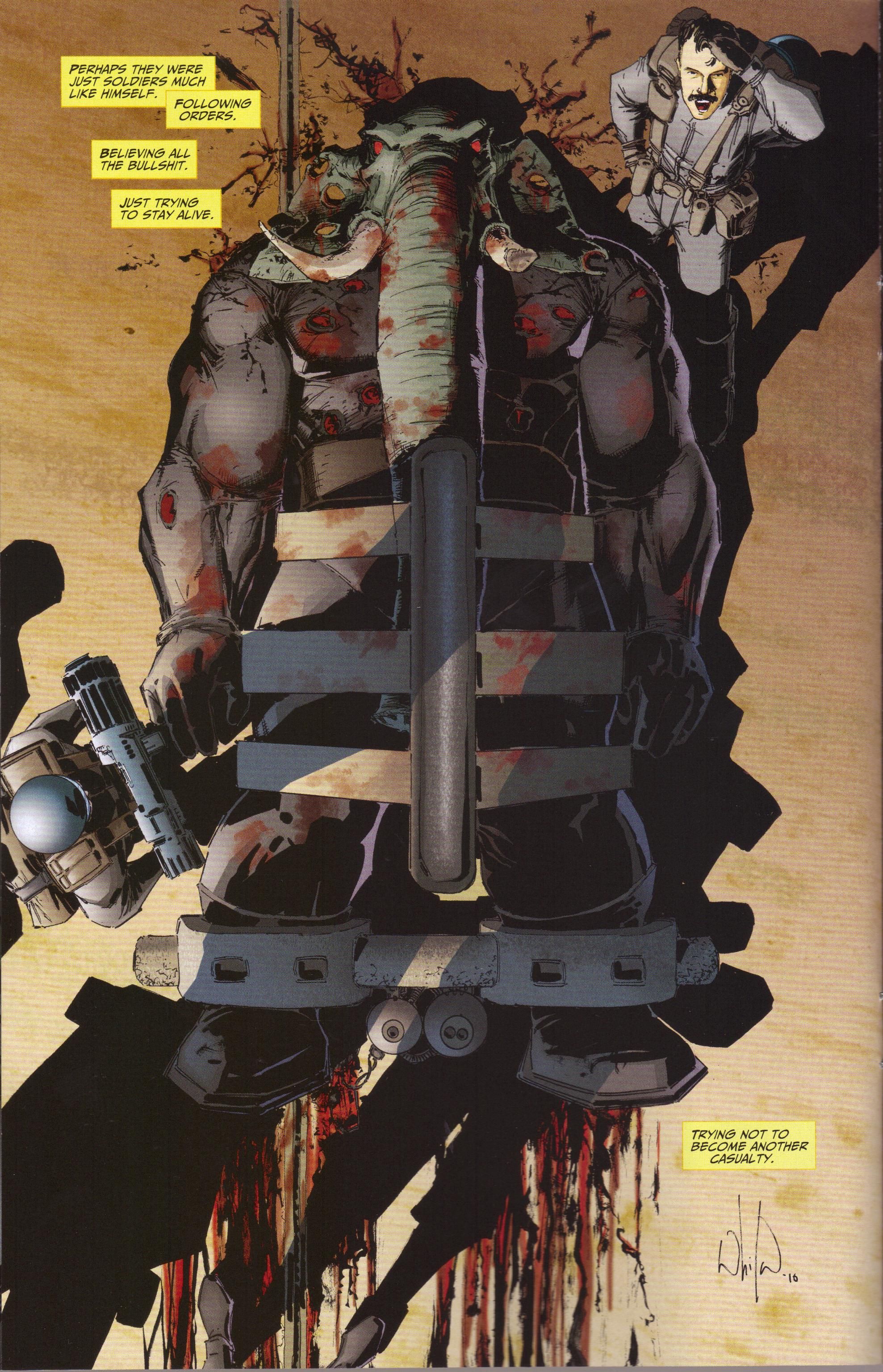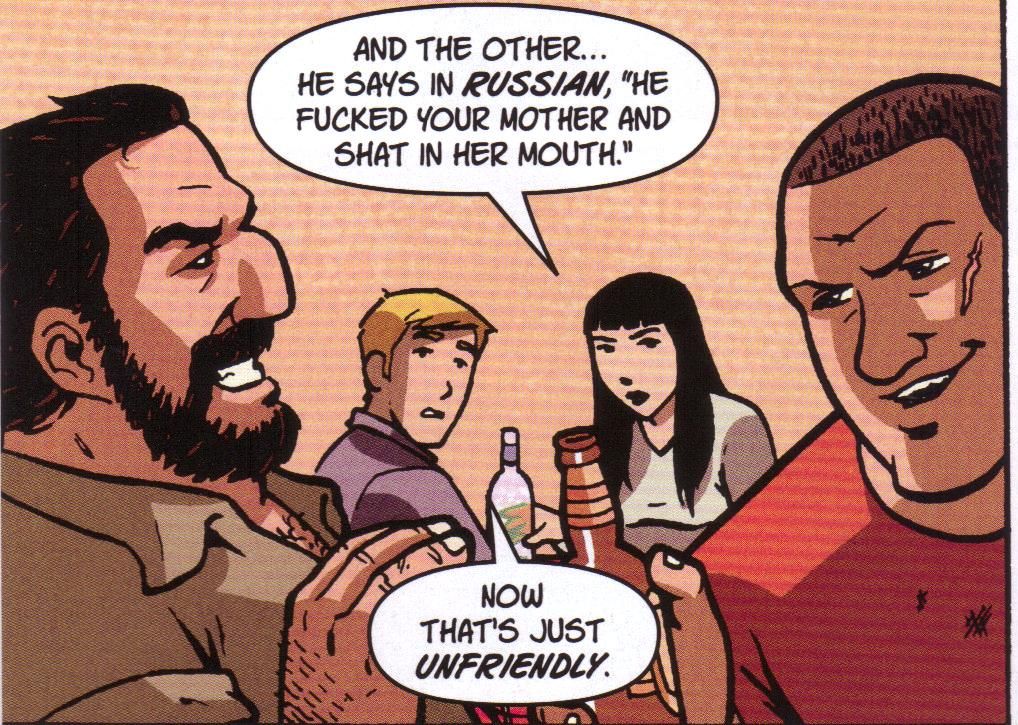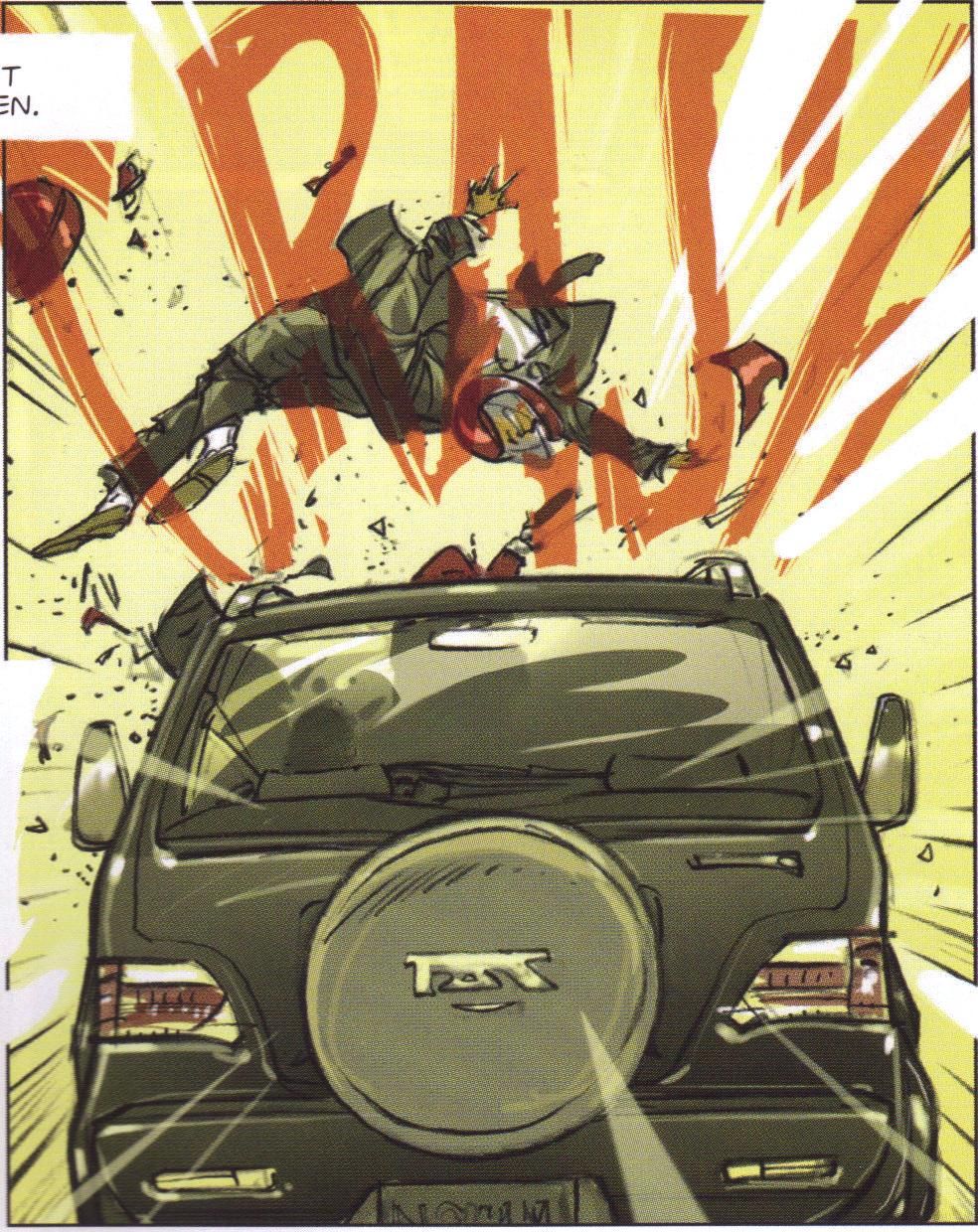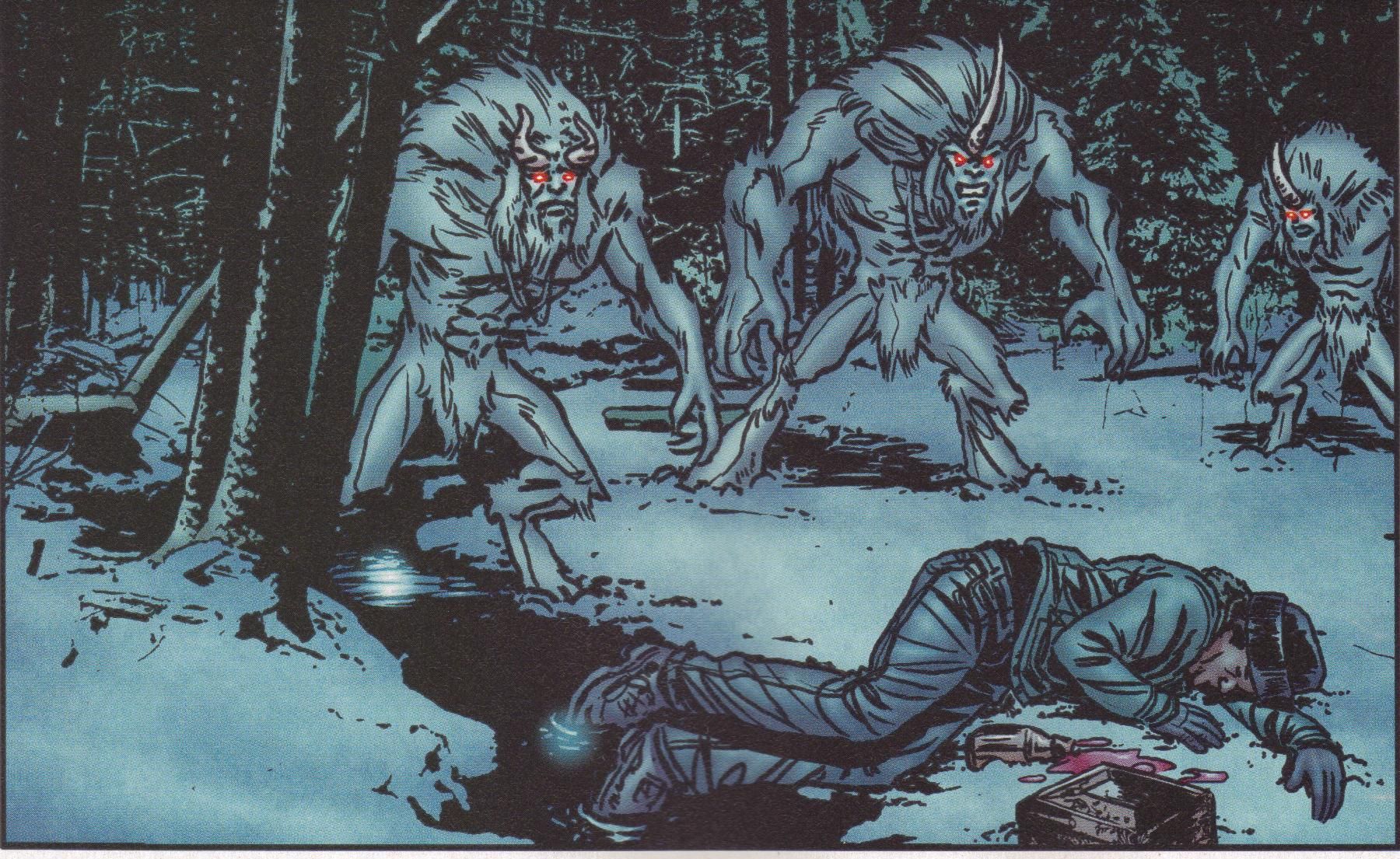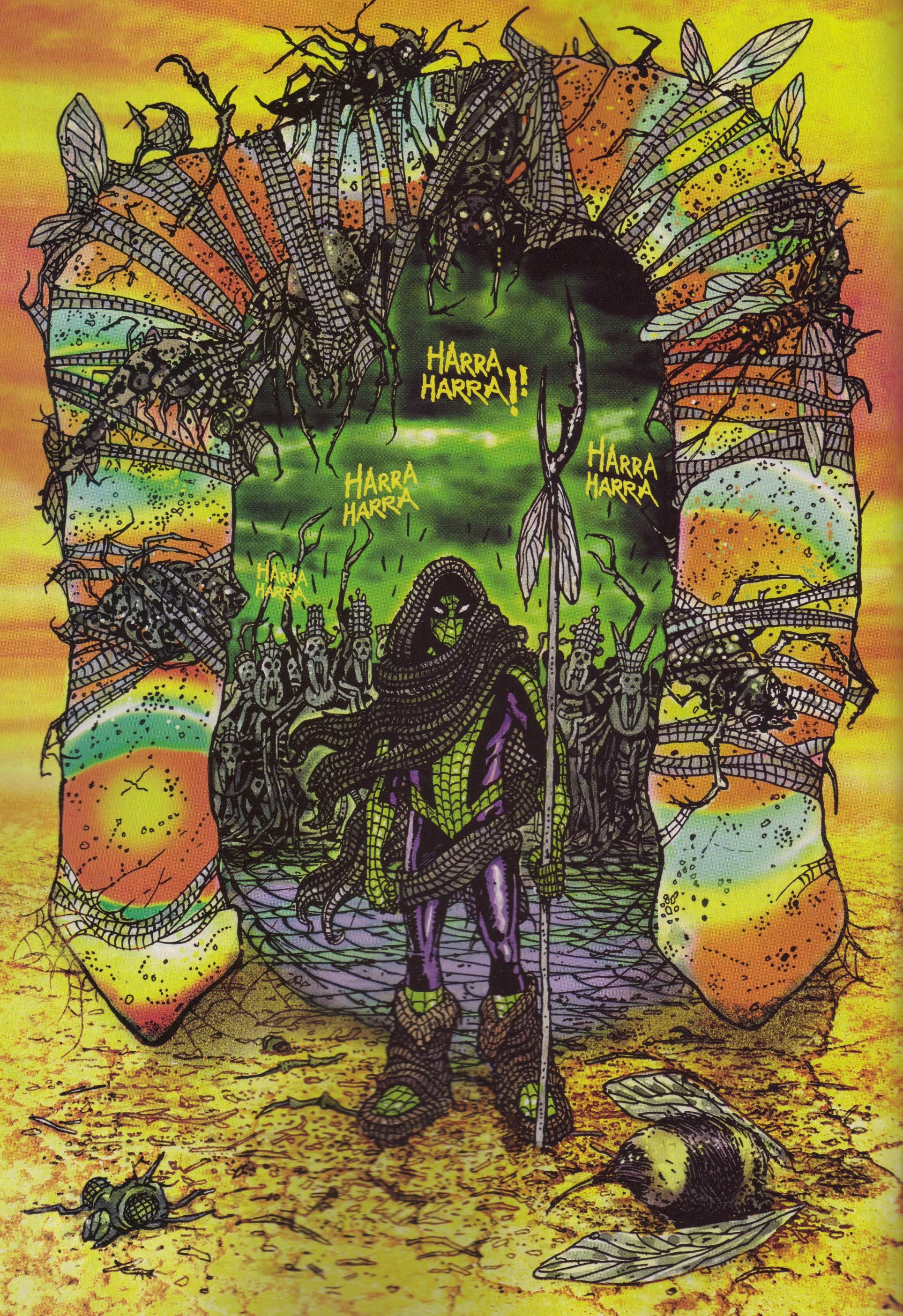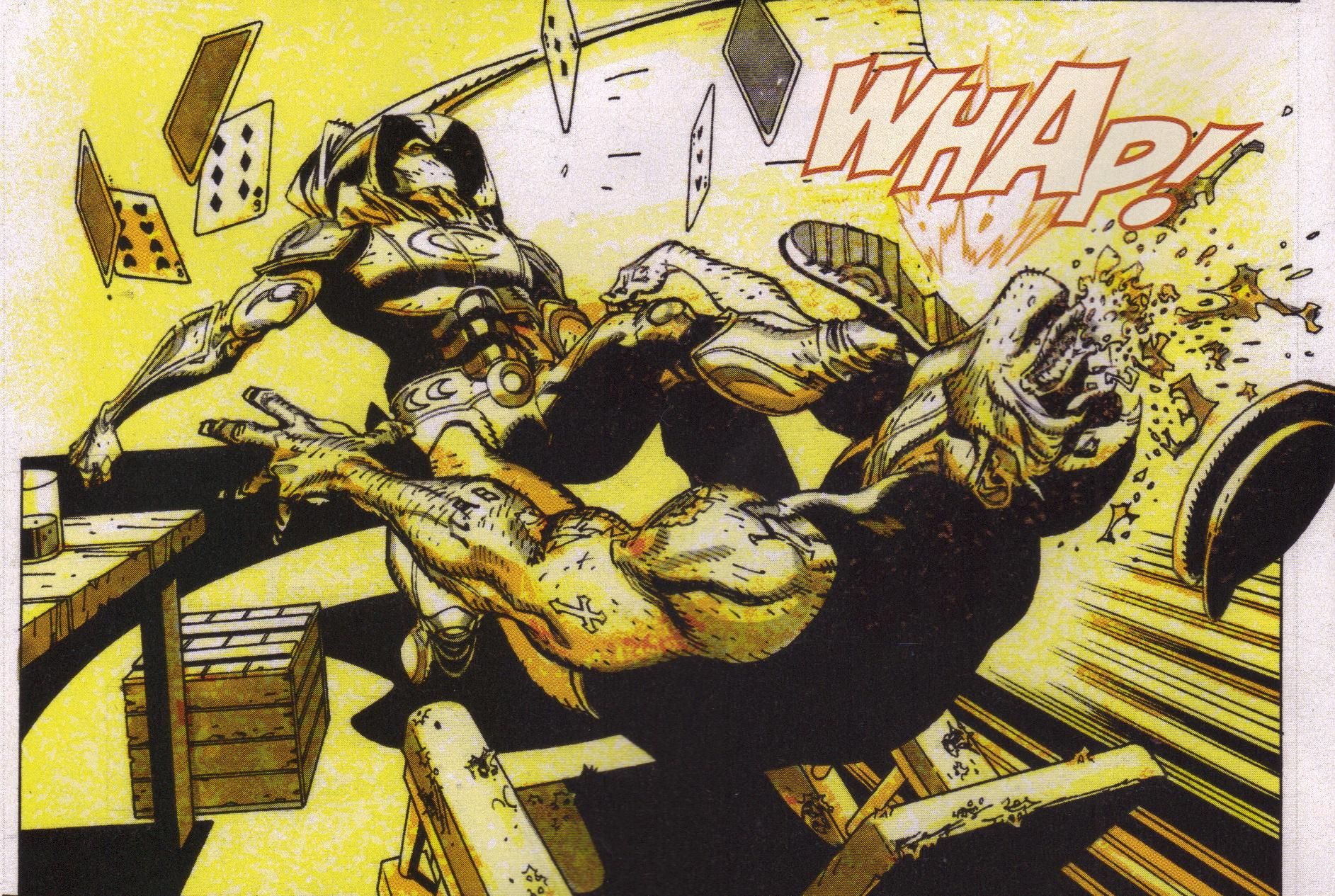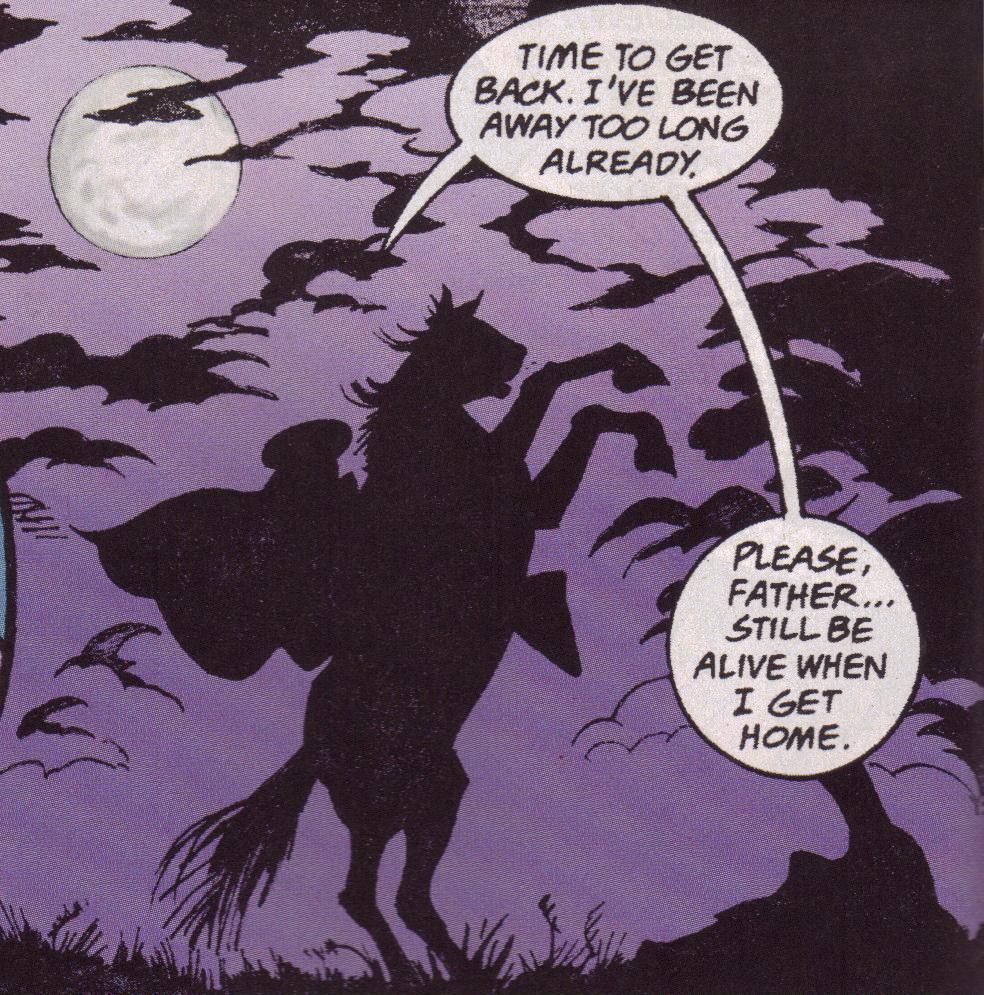For it is a general rule of human nature that people despise those who treat them well and look up to those who make no concessions. (Thucydides, from History of the Peloponnesian War)
Astro City: The Dark Age Book Four #4 (of 4) ("Vengeance is Mine Part Four: Storm's End") by Kurt Busiek (writer), Brent E. Anderson (artist), John Roshell (letterer), and Wendy Broome (colorist). $4.99, 38 pgs, FC, DC/Wildstorm.
This has been a long time coming (I was going to go back and see when "The Dark Age" began, but man! it was a long time ago), but the Royal and Charles Williams saga finally comes to an end after 16 (!) issues. Many people have complained about its length, but I ain't one of them. The entire point of Astro City is focusing on the small things, and even with this grand epic, Busiek still manages to focus on them. Yes, the big-time action has tended to overwhelm the characterization, but in the end, this is a story about two men whose thirst for vengeance has changed them far too much, and it's about whether they can come back from the edge. Busiek is also excellent at these long-building stories, and he has done a very good job showing how the Williams have sacrificed everything for revenge. Complaining that the story was too long misses the point, because Busiek is showing how frustrating chasing something elusive is - we need the Williams to experience failure after failure so we can understand that they have wasted their entire lives, and for what?
Busiek has also been tracking the "darkening" of heroes and how comics changed into the Eighties, another reason this book took so long to come out. Busiek needed to stretch things out so he could show how differently people reacted to the way society changed in the mid- to late-20th century. "The Dark Age" is a fascinating look at how Astro City evolved into something different and Busiek leaves it open whether it was caused by the Horseman or whether the Horseman was drawn to it. That's the eternal question, and Busiek has done a nice job throughout this series-within-a-series at showing how good men can have their souls darkened by tragedy and then how they deal with it. We know how "The Dark Age" will end - with Samaritan saving the Challenger - but it's an interesting end point, because Busiek makes us wonder if, in "our world," we never came out of a spiral of angst and anger because the space shuttle's explosion ended our idealism and belief we could conquer everything. Busiek would say, I'd wager, that he wasn't thinking about that sort of thing, but how could he not?
Busiek points out that Anderson has switched to digital inking, and the results are pretty good. He gets a cleaner line, which is nice. Anderson continues to do a good job with panel layouts, as during the big fight in the middle of the issue, the panels get more and more irregularly shaped and crash into each other with such violence that it amplifies the violence happening in the panels themselves. It's a nice trick that some artists can pull off, and Anderson is one of them. I've always liked his work on the book, and it's keen that he's still figuring out new tricks to make it even better.
Next, Busiek gets back to shorter stuff with a two-parter (I think) about the Silver Agent. That should be fun!
One panel of awesome:
Batman and Robin #12 ("Batman vs. Robin Part 3: Mexican Train") by Grant "How do you like me now, fanboys?" Morrison (writer), Andy Clarke (penciller), Dustin Nguyen (layouter), Scott Hanna (inker/finisher), Alex Sinclar (colorist), Patrick Brosseau (letterer). $2.99, 24 pgs, FC, DC.
Well, I'm not about to spoil this, but I will say I'm not too happy with the big reveal. That's not to say that Morrison hasn't done a good job setting it up, but when I reached the last page, I thought, "Blah." We shall see where it goes from here, because it appears we will be getting something different with regard to the character, but it still seems dull. Oh well.
This issue also bugs me because of what Other Greg wrote about last week - namely, that this story will, presumably, be collected in a trade (the first six issues were, so why not these six?) and it ends on a freakin' cliffhanger. Now, one should know that this is a long-term story that doesn't necessarily have to end with issue #12, but DC gave this series different artists for each three-issue arc, which should be a natural place to end a story arc. I get that the artists might not be able to do more than three issues in a row (I mean, God forbid they should, right?), and in the case of this issue, not even finish three in a row, but the way DC automatically brought in a permanent rotation of "guest artists" seems to indicate that each arc would at least tell a complete story. The actual story in this arc could probably have been compressed to two issues, because it was pretty much done by page 17 of this issue (and even this could have been compressed) and then Morrison returned to his bigger story and checked in on some loose ends. Morrison has always done this - gone for the gi-huge-ic story as a backdrop for his smaller ones - and I don't have a problem with it, but I wonder how DC is going to market this. Morrison has been writing Batman for four years, so if DC sticks a "1" on the spine of the first trade of Batman and Robin and a "2" on the next one, that's a disservice to people, as they'd be completely lost. The plot of this arc really wasn't enough to stand on its own as a three-issue tale, so it was all about loose ends from earlier arcs and even earlier and completely different comic books.
As a story arc, this one never really came together. Damian's attack on Dick is fascinating and is the central point of the arc, but it doesn't really get too in-depth. Damian's meeting with Talia is handled well, though. Then there's the deal with Barbathos and Bruce Wayne's messages from deep in the past, including the shape of the Wayne estate. Then there's Penitente and his plans for Gotham. Finally, there's Oberon Sexton. As a long-time reader of the title and a fairly slavish devotee of the God of All Comics, I'm perfectly happy to read this grand tale, but as an individual issue and as a three-issue arc, this spun its wheels a bit. If you're reading this in trade format, well, apparently according to DC you're everything that's wrong with comics, but even more than that, it must be really frustrating waiting so long between installments, especially when we get a jaw-dropping (or supposed jaw-dropping) reveal on the final page. Poor trade-waiters!
(I will say I wasn't even trying to figure out the mystery. I'm not one of those people. I prefer to read the book the way the author intended and then, later, go back and look for the clues with the knowledge of where it's leading. I don't like guessing, and usually writers who create mysteries make it impossible to figure it out on your own. That being said, have you noticed that television writers have become increasingly lazy in this regard? The wife and I like watching mystery shows, and we've figured out that it's always the first person the cops interview or see. They interview the person, ignore them, and then they discover that they need to circle back around on that first person. Two recent examples (SPOILERS, obviously): On last week's Bones, about halfway through the story, I asked my wife, "Do you know who it is?" She just chuckled and said, "I think so." I said it was the purple-haired Asian guitarist who Booth and Bones met when they first entered the rock 'n' roll camp. So of course it was him! And on this week's Castle, Beckett and Rick interviewed the chef's foster brother first, not even as a suspect but just to get some information about him. Well, duh, of course it was him! And he's sitting with his girlfriend. Of course the chef was boinking the girlfriend! It's not even guessing with these shows - it's like writers think we won't notice how easy they're making it. Come on, television writers, try something different, please! Okay, rant over. Sorry.)
One panel of awesome:
Codebreakers #2 (of 4) by Carey Malloy (writer), Scott Godlewski (artist), Stephen Downer (colorist), and Johnny Lowe (letterer). $3.99, 22 pgs, FC, Boom! Studios.
I met artist Scott Godlewski a few weeks ago. Turns out he lives in Mesa. Whattaya know about that?
Like another mini-series below this one, Codebreakers is really turning out to be a nifty read. Godlewski continues to do a nice job with the art, especially the character interaction (the way he shows Lindsay's "power" to read people well is keen), and Malloy is building a nice bit of tension in the story. We saw the great codebreaker, Stan, kidnapped last issue and set to work on a phenomenally difficult code, and in this issue, things are getting a bit hairy for him, as the kidnappers aren't the friendly kind who ultimately convert you to their cause, they're the kind who remove body parts when you don't do what they want. Meanwhile, the other three members of Stan's team hunt him down without official sanction, and then Donald, the boss, takes off without Lindsay and Mal. It turns out he knows who kidnapped Stan, and they have a history. So he has a bad-ass plan that involves being bad-ass, while Lindsay has a plan that involves asking a criminal's wife for help. Oh, such a spiral!
Halfway into this series, I'm really enjoying it. I know I'm kind of a sucker for espionage comics almost as much as Kelly Thompson is a sucker for Zenescope's slutty fairy tales (I mean, she wallpapers her living room with pages from them - seek help, Ms. Thompson!), but this is well done. I'm looking forward to the rest of the series.
One panel of awesome:
Demo #4 (of 6) ("Waterbreather") by Brian Wood (writer), Becky Cloonan (artist), and Jared K. Fletcher (letterer). $2.99, 26 pgs, BW, DC/Vertigo.
Holy flarking snafflewhomp, Cloonan's art on this series is Dy-No-Mite. She gives us this opening sequence that culminates in a young man named Colin throwing himself off a bridge and into a river (see one panel of awesome, below). Given the title of the story, we don't wonder why - we just assume he can, in fact, breathe water. And he can. But then Wood goes back in time to show how Colin learned of this, and Cloonan is magnificent. Colin gets thrown into a lake by some bullies, and the shot of him looking up at the pier, a half-smile on his face as he realizes he can breathe but the bullies don't is priceless. The spooky atmosphere as he walks across the bottom of the lake later on is wonderful, and the act of violence he perpetrates against the bullies (which, if you think about it, you can figure out for yourself) is beautifully portrayed, from Colin's provocation to the tragic denouement, which of course takes place in water and is therefore creepily quiet and peaceful. Colin's decision as an adult (which takes us back to the beginning) is illustrated wonderfully by Cloonan, with an alien universe under the water slowly becoming more and more familiar. It's a tremendous-looking comic, and Wood must be happy to have a collaborator like Cloonan, because she can take his sparse tales (that's not a criticism; Wood is capturing emotional moments and doesn't need to write too much) and make them sing. Demo is, as I pointed out last time, like poetry - disjointed imagery, vague metaphors, concerned more with the moment than with the plot (and hey, I love poetry) - and Wood simply needs to give Cloonan some bare bones and let her cover them with flesh. Man, I'm getting weird. I'll shut up now. But check out Cloonan's art. You won't be sorry.
One panel of awesome:
Elephantmen #25 ("Questionable Things Two of Seven: The Big Picture") by Richard Starkings (writer) and many, many artists. $3.50, 31 pgs, FC, Image.
The always groovy Richard Starkings sent this to me, as he has every other issue of Elephantmen, and I'd like to thank him for it. I know I write that all the time, but it's still swell of him to do it!
As this is the 25th issue of Elephantmen, Starkings decides to bring us up to speed on the series. That means introducing Hank Gruenwald, Hip Flask's boss, and having him reminisce about what has happened and where all the principal players are at this time. If you haven't read Elephantmen yet, this isn't a bad place to start, even though it's difficult to get a feel for the art, as each page features a full-page drawing by a different artist. Some are closely associated with the comic - Moritat, Ladrönn, Marian Churchland, Ian Churchill, Boo Cook, Andre Szymanowicz - while others aren't. But they all look cool, and Starkings does a nice job getting the readers re-oriented. He also manages to introduce a new character who, presumably, will play a big role in upcoming issues. It's a good place to climb aboard, and you get to see a bunch of neat pin-ups. It's neat that even in what is basically a clip show, Starkings moves the plot forward. Good stuff!
One panel of awesome:
Ghost Projekt #2 (of 5) ("Snow Ghosts") by Joe Harris (writer), Steve Rolston (artist), Dean Trippe (colorist), and Douglas E. Sherwood (letterer). $3.99, 24 pgs, FC, Oni Press.
The other mini-series that is really looking good after two issues is Ghost Projekt, in which Harris continues to pile on the mysteries. There's the ghost of the title, whom we saw last issue, and what's she up to? There's the fact that the Russians don't trust the Americans and the Americans don't trust the Russians (not surprising, that, but Harris does a good job with it). There's the fact that Anya tells Will about the Tartars, the Mongols who swept across the Russian steppes in the thirteenth century and hung around as a power in Russia for centuries. There's the person spying on Will and Anya who tries to hypnotize him later. There's the bruises on Anya's neck. And there's what Will finds in a warehouse at the end of the issue. It's a very dense issue with a lot of creepiness swirling around it. Harris even manages to fit in some banter between Will and Anya, which feels like it will be important down the line.
Rolston and Trippe continue to do a fine job with the art. Rolston gives every character a great deal of personality, even the minor ones, while the coloring continues to be very good. There's a bleakness to the exterior scenes almost make the book feel like it's in black and white, which makes the interior scene of Will and Anya at the bar even warmer and therefore a bit sadder, as we know it can't last. There's nice collaboration between Rolston and Trippe, and the book continues to look great.
Harris is giving us a nice story that is slowly building tension, and it's fun to read, to boot. Put down that latest team-up of a webslinger and an unkillable mutant and give this a try!
One panel of awesome:
The Killer: Modus Vivendi #1 (of 6) by Matz (writer/translator), Luc Jacamon (artist), Edward Gauvin (translator), and Scott Newman (letterer). $3.95, 27 pgs, FC, Archaia.
The Killer returns in a sequel to the first, excellent mini-series (it is, after all, a Comic You Should Own), and Matz and Jacamon haven't slowed a bit. It's four years later, and our killer has become a bit bored with his retirement. Part of the problem (and one of the issues that I have with the book) is that he's no longer married, so he's alone. He decides to take some jobs near Venezuela, and when he gets one particular target, he begins to question what's going on - which, as we know from the first series, he never does. This questioning gets him into some trouble in this issue and will presumably be the plot of the series.
Jacamon is fantastic as usual, giving us a very good sense of place, in this case South America, and very good design of the people and places. We feel immersed in this world, so we're right there with the killer as he takes out a couple of targets and then visits his old friend Mariano to find out more about what's going on. Of course, the violence is very detailed and shocking, but that's the point. Meanwhile, Matz continues to show that our main character is quite philosophical, as he muses about his retirement and what is drawing him back into the assassin's world and why he suddenly feels the need to ask questions. It's actually an interesting shift in the character - his wife, who knew what he did, is no longer in his life, and she took their son with him. I'm not too happy with that, because she was an interesting character in her own right, even though she could have used some more development, and whenever a relationship falls apart "off-screen," as it were, it feels like the writer is taking the easy way out. But it does allow the killer to think about his philosophy, which now seems a bit more desperate and pathetic than it did in the first series. He sounds like he's trying to convince himself, whereas in the first series he was definitely trying to convince us, smug in his superiority. He's lost a bit of that, so if Matz thinks he had to ditch his family to get him to that point, I guess I can deal with it. And I'm almost positive she'll make an appearance at some point in this series. But who knows? I'm sure some of our European readers are laughing at me because they've already read it and know what happens and I'm way off. Oh well.
Anyway, it's a strong beginning to the sequel, and if you haven't read the first series, Matz does a good job making sure you understand all the particulars. If you haven't read the first series, you really ought to!
One panel of awesome:
The Secret History Book Eight ("Seven Pillars of Wisdom") by Jean-Pierre Pécau (writer), Igor Kordey (artist), Chris Chuckry (colorist), Edward Gauvin (translator), and Scott Newman (letterer). $3.95, 46 pgs, FC, Archaia.
Another European comic from Archaia returns this week, too, and once again, it's nice to see. Especially when you check out that price - 46 pages for 4 bucks? That ain't bad! From the frontispiece in this issue, it appears that Pécau has a lot more to get to with regard to the story of his four archons, and while I wish he hadn't telescoped it so much into the twentieth century, I am looking forward to the rest of the story. The seventh issue, which I originally thought was the end of the series, ended with Hitler in a World War I hospital and the bad guys planning to use him, so I was glad that there was more to the story. Pécau does a nice thing with this issue, completely ignoring the end of the the seventh issue and getting into the hunt for more runestones across the Middle East, which ties into the whole Hitler thing and is therefore necessary to check out. So we get a racist German who joins up with the major bad guy of the series, William of Lecce; Kim Philby's father finding more runestones in an ancient city that has a connection to the very first issue of the series; and a disturbing foreshadowing of the Nazis. Curtis from issue #7 returns and helps Reka track Philby across the desert and into Armenia, and I'm glad to see him - one of the complaints I had about the first seven issues was that because they took place in different centuries, the regular human folk often got just enough character development to make them interesting and then Pécau moved on, and by the next issue they were dead. Curtis is a returning character who will, if I recall the solicitation texts, play a bigger role in subsequent issues, which is nice. For the most part, this is Pécau giving us a good adventure tale, and of course, Kordey does his usual fine job with the art. And you can't beat that price!
I just reviewed the first trade of this series, so if you want to start there, that's probably a good idea. But this is a good way to start the next chapter, as Pécau focuses on the 20th century and the crappy time people had during it. Should be fun!
One panel of awesome:
Secret Six #21 ("Cats in the Cradle Part Three of Four: The Precipice") by Gail Simone (writer), Jim Calafiore (artist), Jason Wright (colorist), and Travis Lanham (letterer). $2.99, 22 pgs, FC, DC.
Okay, so I'm puzzled. Does Alice flip out because she takes Dr. Occult's powers and can't handle them? She claims it feels like your the first time you get that time of the month, which means Simone is toying with the idea of a woman going full-on bitch when she gets her period. Is that what happens? Alice goes absolutely bonkers and calls up a demon called "Estrogan" instead of Etrigan (which is a funny joke, but what if there's no demon called that?) and should I assume that's why? I guess. It seems like a bit of a stretch.
I don't really have much more to say about this issue. It's typically brutal, typically darkly humorous, and we get some nice backstory about Blake and more homoerotic tenderness from Lawton. And Blake continues to go apeshit. It's a fantastic comic book. I'm not a Califiore hater like some people here at yonder blog, but I don't like his rendition of Loki. It's kind of weird. But other than that, I've been trying to think of what to write about this issue. It's the middle of an arc, and it's excellent, so what else can I say? Just buy it, will you?
One panel of awesome:
Sparta U. S. A. #3 (of 6) ("Various Cancers") by David Lapham (writer), Johnny Timmons (artist), Gabe Eltaeb (colorist), and Wes Abbott (letterer). $2.99, 23 pgs, FC, DC/Wildstorm.
Lapham continues to give us facts about the "America" in which this story takes place, and it keeps getting more fascinating. Godfrey tells of these women from beyond the mountains who get children by having sex and then shooting the kids out from between their legs. Holy crap, what a concept! I mean, we knew there were Yeti in them thar hills, and Godfrey is, of course, red-skinned, but the story continues to take these really odd turns, and it's kind of fun. Godfrey has a plan that includes taking his rival up into the mountains and leaving him for the Yeti, and when he survives that, showing him a cave blocked by a large rock that, he believes, hides the key to why Sparta exists. And Godfrey's wife continues to make trouble. That can't be good.
I was intrigued by this series after the first issue, but Lapham, in his way, keeps making it stranger and stranger. As it's a mini-series, maybe we'll actually get a resolution to all the mysteries. Wouldn't that be nice?
I wanted to rant a bit about Lapham, if I might. I got in an argument with a couple of people at my comic book shoppe who argued that Lapham hadn't written anything good since Stray Bullets. I pointed out that they were full of shit, because he's written plenty of good things since Stray Bullets. (As an aside, the fact that Lapham can't do Stray Bullets for Vertigo continues to make no sense to me. As we just saw in Previews, Steven Seagle and Kelley Jones took The Crusades to Image. Now, it took a decade, so maybe it got caught up in legalities, but Lapham claimed that he couldn't do Stray Bullets for Vertigo because of ownership issues, but wouldn't he still own it? Again, maybe it would be too legally annoying to enter a relationship with Vertigo and then, if it didn't work out, extricate it from DC, but who knows. I'm just pointing out that you can get a series away from Vertigo if you want. Even if it's difficult.) One of the people is the dude who works there, and he at least read some of Young Liars. The other guy, who's kind of misanthropic, hasn't read anything by Lapham recently. Why do people do that? I don't sound off about things about which I have no idea. I might make a joke about a certain team-up book starring a ubiquitous webspinner and a ubiquitous fast-healing mutant and claim it's no good, but I don't do it seriously. It might be the greatest comic in the history of the four-color arts as far as I know. It just bugs me that people who haven't read stuff can claim that someone like David Lapham hasn't written anything good since Stray Bullets when those people haven't actually read anything by David Lapham since Stray Bullets. I know, this is self-evident, but I feel intellectually dishonest if I state a definitive opinion about something I haven't read or seen. That being said, Iron Man 2 SUCKS DONKEY BALLS!!!!!!! You know it's true!!!!!!!!
Hey, that felt pretty good. No wonder people talk out their asses!
One panel of awesome:
Spider-Man: Fever #2 (of 3) by Brendan McCarthy (writer/artist/colorist/letterer) and Steve Cook (digital effecter/letterer). $3.99, 22 pgs, FC, Marvel.
You might expect me to be annoyed with this comic book. In a weird mini-series that will be forgotten by those who determine what things "count" in Marvel continuity and what doesn't, McCarthy makes a fairly significant alteration to Spider-Man's origin that, if I remember correctly (and, let's be honest, I don't often remember correctly and am impressed by people who do - have you read this goddamned comment by Omar - how the hell does he remember this shit?) jives with what JMS did with that whole "spider-totem" thing but still doesn't mean will stick. But guess what? I don't care, specifically because this alteration will be forgotten. McCarthy is just telling a weird, magical story, so of course he needs to alter Spidey's origin so that the magic has some impact on it. I don't care, because no one will ever run with it.
As for the actual story ... who really cares, right? I mean, it's not a bad story, but what really makes this a fun, fun comic is McCarthy's absolutely stunning artwork, and I simply can't describe it. So let's just check out a sample and move on, shall we?
One panel of awesome:
Vengeance of the Moon Knight #8 (Killed, Not Dead Chapter 2: Sweet Slumber") by Gregg Hurwitz (writer), Tan Eng Huat (artist), Dan Brown (colorist), and Joe Caramagna (letterer). $2.99, 23 pgs, FC, Marvel.
I mentioned after the first arc that I was worried that Hurwitz was going to make Moon Knight more and more superheroey and I didn't really want to read that, and unfortunately, it seems like he's going that way. This is less superheroic than I feared, but when you have Moon Knight, who used to be a mercenary and is trying to make a better life and is a bit, you know, loopy, and Deadpool, who still is a mercenary and is also a bit loopy, you really should try to contrast them better. Hurwitz hints at it, but he's more interested in having the two of them beating on each other. I mean, it's funny when Moon Knight realizes that Deadpool has a healing factor and he can cut loose like he's wanted to do to all the criminals he's been sparing, but it's still not worth it. It's certainly darker than your usual superhero comic, but it's definitely not as interesting as the comic has been in the past. It's kind of a shame. I mentioned that I'm going to buy it because Juan Jose Ryp is drawing at least the next two issues and because I doubt if it's long for this world, and I've come this far, damn it! And it's not like the book is terrible, it's just less interesting than it has been in the past. If the book is going down the tubes, Hurwitz needs to go balls to the wall and not try to make this bland, man! No guts, no fucking glory, Hurwitz!!!!!
One panel of awesome:
Zorro: Matanzas #4 (of 4) ("Disturbing Resolutions") by Don McGregor (writer), Mike Mayhew (artist), Sam Parsons (colorist), John Costanza (letterer), and Kel-O-Graphics (digital inker). $3.99, 24 pgs, FC, Dynamite Entertainment.
McGregor wraps up this mini-series rather oddly. It was, according to McGregor, part of the regular series from a decade ago, but never saw print. Yet it's obviously tied into the regular series because it ends ambiguously, with Diego's father still on death's door and Machete unpunished. It really needs to be more ... finished, I guess, because if Dynamite is going to release it as a trade, it's going to piss some people off, I reckon. I mean, it's not like the rest of the series is going to be collected, right? Maybe it will be, I don't know. Anyway, this is still an entertaining mini-series even though it flows very weirdly - most of the series takes place over, what, ten minutes? McGregor does a decent job stretching the minutes, but there's still a weird feeling as you read this, because everything is happening so quickly but there's still a ton of prose to get through. It's frustrating, because we feel there could be much more going on with Zorro and Machete and their battle, but McGregor narrows his focus so much on the wild bull that gores Diego's father and the stampede that it's impossible to really get into the rivalry. The point of the story seems to be that Diego is trapped between helping his father and revealing his identity. Machete is incidental to that dynamic, but by the same token, he's important in Diego's life, and McGregor doesn't do enough within the confines of this mini-series to flesh out their relationship. As an arc of a longer book, this would probably work fine, but as a standalone story, it's frustrating. It's interesting to check it out as a historical curiosity, but I can't really recommend it. Oh well.
One panel of awesome:
Dong Xoai, Vietnam 1965 by Joe Kubert (writer/artist) and Pete Carlsson (letterer). $24.99, 211 pgs, BW, DC.
1. Joe Kubert is 83 years old. And he can probably kick both his sons' asses at the same time while writing and drawing a comic book. Sucks to be them.
2. This comic has something like 30 pages of historical backmatter about the incident Kubert is writing about. Dang, it's comprehensive!
3. Goddamn Joe Kubert kicks ass.
Dreadstar: The Beginning by Jim Starlin (writer/artist), Tom Orzechowski (letterer), Jerron Quality Color, Mike Kelleher, and Digikore Studios (remasterers). $29.99, 232 pgs, FC/BW, Dynamite Entertainment.
I've wanted to read this for some time, so I'm glad it finally came out. I know most of the story anyway, but it's still keen to have this. I'm a bit puzzled why some of it is colored and some is in black and white, but it still looks fan-freaking-tastic.
Forget Sorrow: An Ancestral Tale by Belle Yang. $23.95, 250 pgs, BW, W. W. Norton.
This is a story about a Chinese woman who starts to learn about her family's history, so of course I had to get it!
Jane's World (Collection 1) by Paige Braddock. $19.95, 475 pgs, BW, Girl Twirl Comics.
LESBIANS!!!!!
You may or may not want to peruse The Ten Most Recent Songs Played On My iPod (Which Is Always On Shuffle But Which Often Gets Reset, A Vexing Dilemma):
1. "18 and Life" - Skid Row (1989) "Tequila in his heartbeat, his veins burned gasoline"12. "Gallows Pole" - Led Zeppelin (1970) "Friends, you get some silver? You get a little gold?"
3. "Independence Day" - Elliott Smith (1998) "You only live a day, but it's brilliant anyway"24. "Devil's Haircut" - Beck (1996) "Heads are hanging from the garbage man trees"
5. "Amerika v6.0 (The Best We Can Do)" - Steve Earle (2002) "I remember when we was both out on the boulevard talkin' revolution and singin' the blues"
6. "Times Like These" - Foo Fighters (2002) "Do I stay or run away and leave it all behind?"
7. "I'm With Stupid" - Chumbawamba (2000) "You won't catch me living or dead on the Hollywood A-list"
8. "Startin' Up a Posse" - Anthrax (1991) "Cunty cunty cunty cunt!"39. "Nitro Burning Funny Cars" - Dead Milkmen (1987) "This world is full of people who look a lot like Gavin McLeod"410. "Bring the Noise" - Public Enemy (1988) "Whatcha gonna do? Rap is not afraid of you"5
1 Go ahead, scream away with Sebastian. I'll wait.
2 I don't know why, but the fact that Smith is dead is still weird to me. I don't know why, because other famous people have died since, and I wasn't his biggest fan, but it's still just a strange event. To me, that is.
3 I may not like that word, but that lyric cracks me up.
4 So very, very true.
5 Back in 1991, I saw Public Enemy and Anthraz together in Allentown, PA. And now they both show up on my iPod within a few songs of each other, and Anthrax covered "Bring the Noise" as well. It's all coming together!
Let's deal with some totally random lyrics!
"I wish that I was born a thousand years ago
I wish that I'd sail the darkened seas
On a great big clipper ship
Going from this land here to that
In a sailor's suit and cap
Away from the big city
Where a man can not be free
Of all of the evils of this town
And of himself, and those around"
I'll give you a vague hint: I hate this song. It is one of the few songs that I've heard that actually gives me a headache. Therefore, I can never listen to it. God I hate it. But hey! cool lyrics, right?
Let's be careful out there, shall we?


